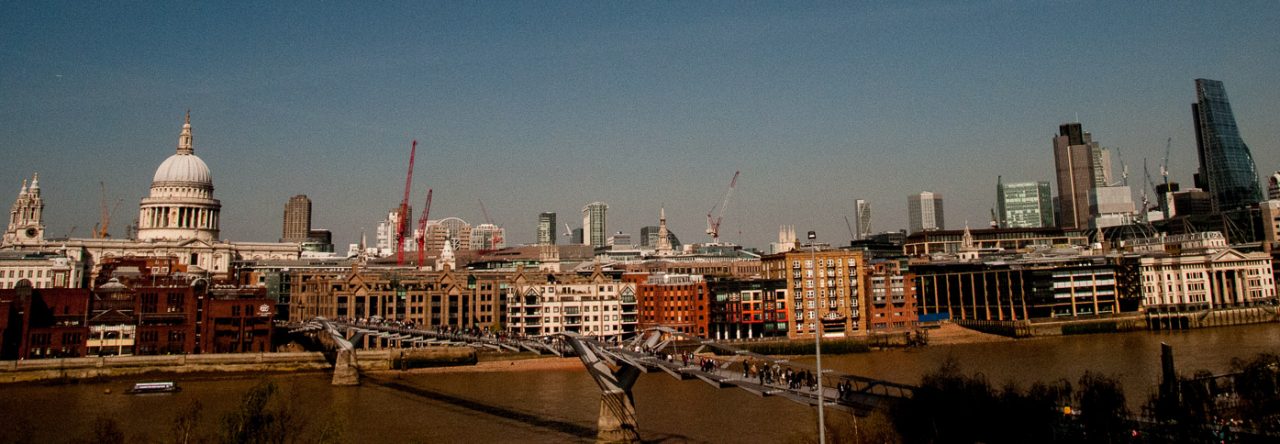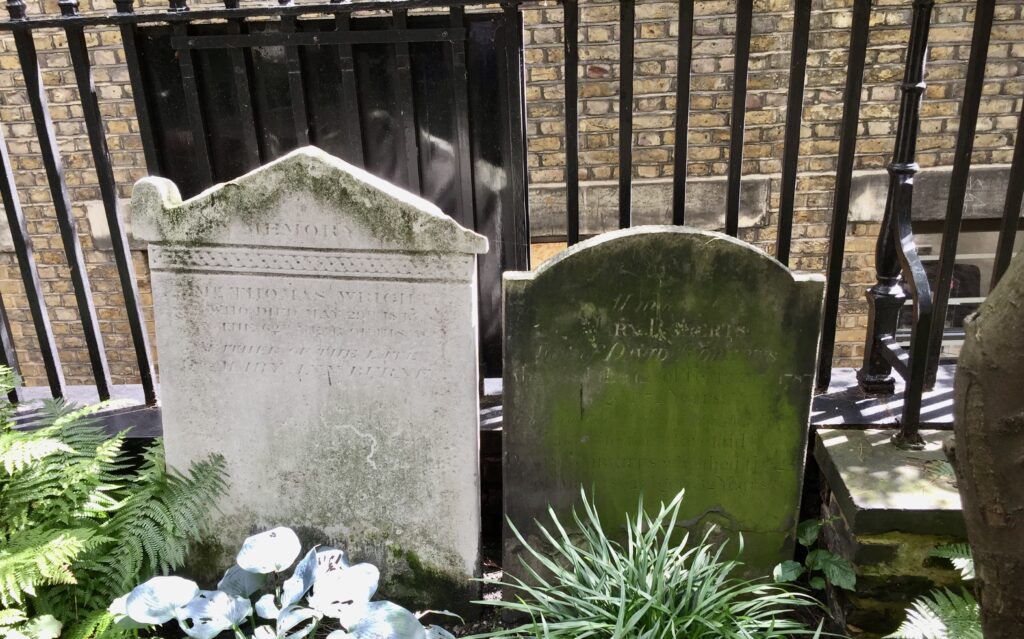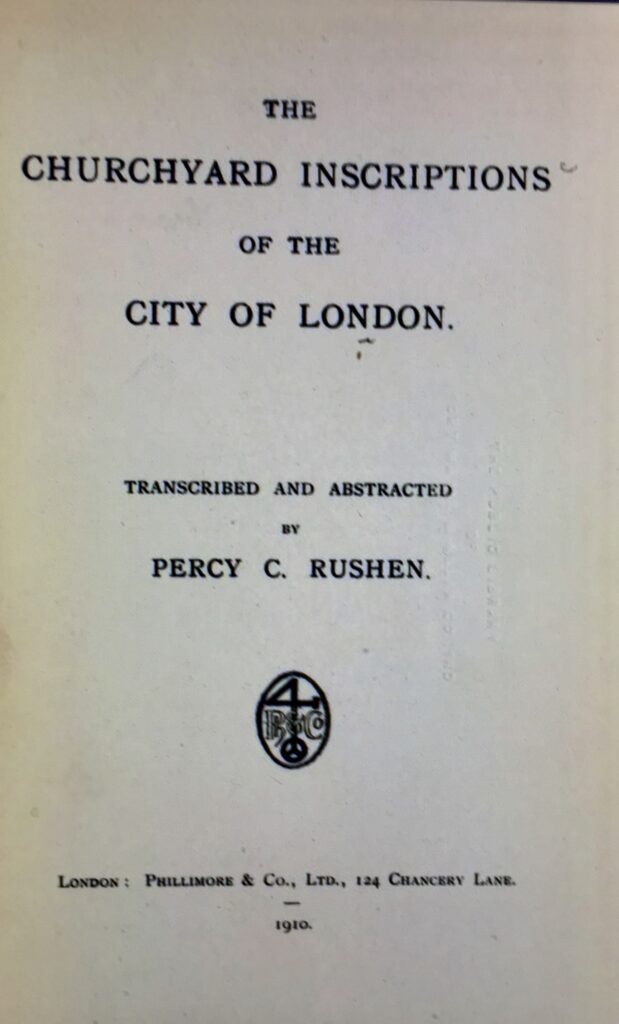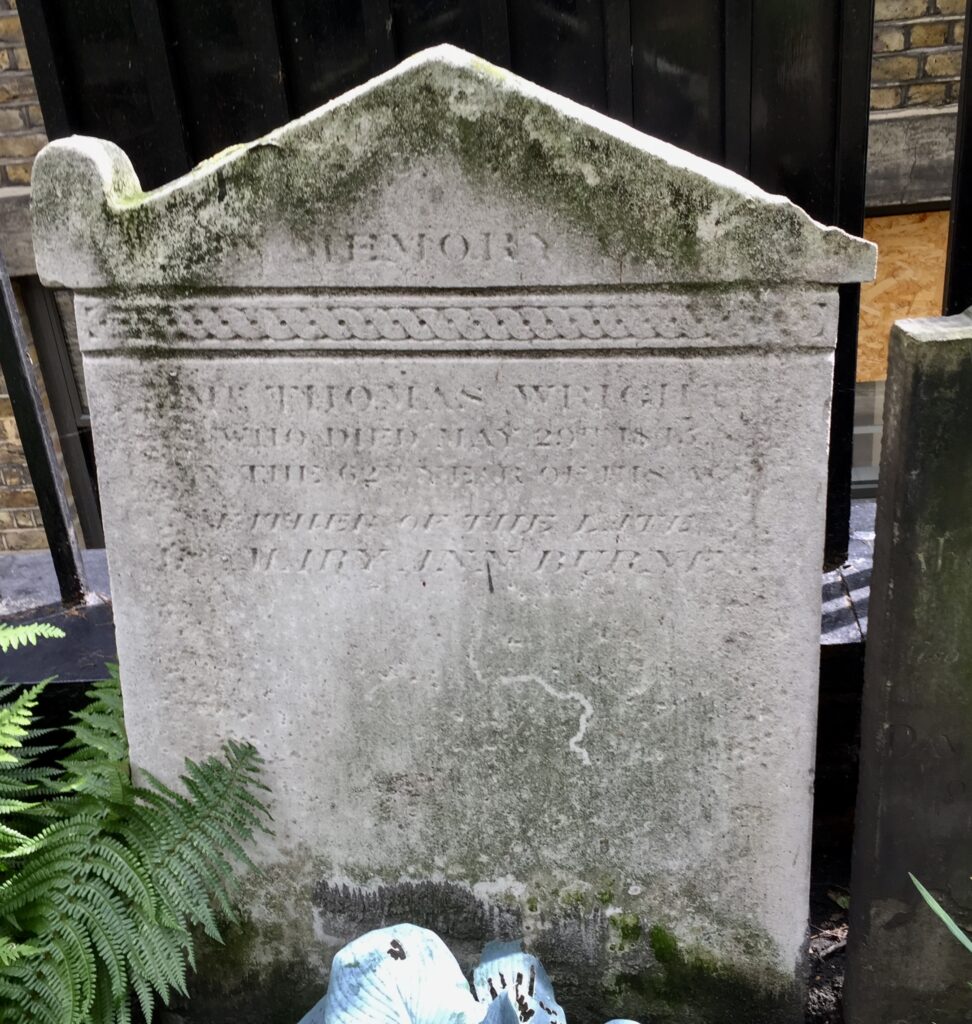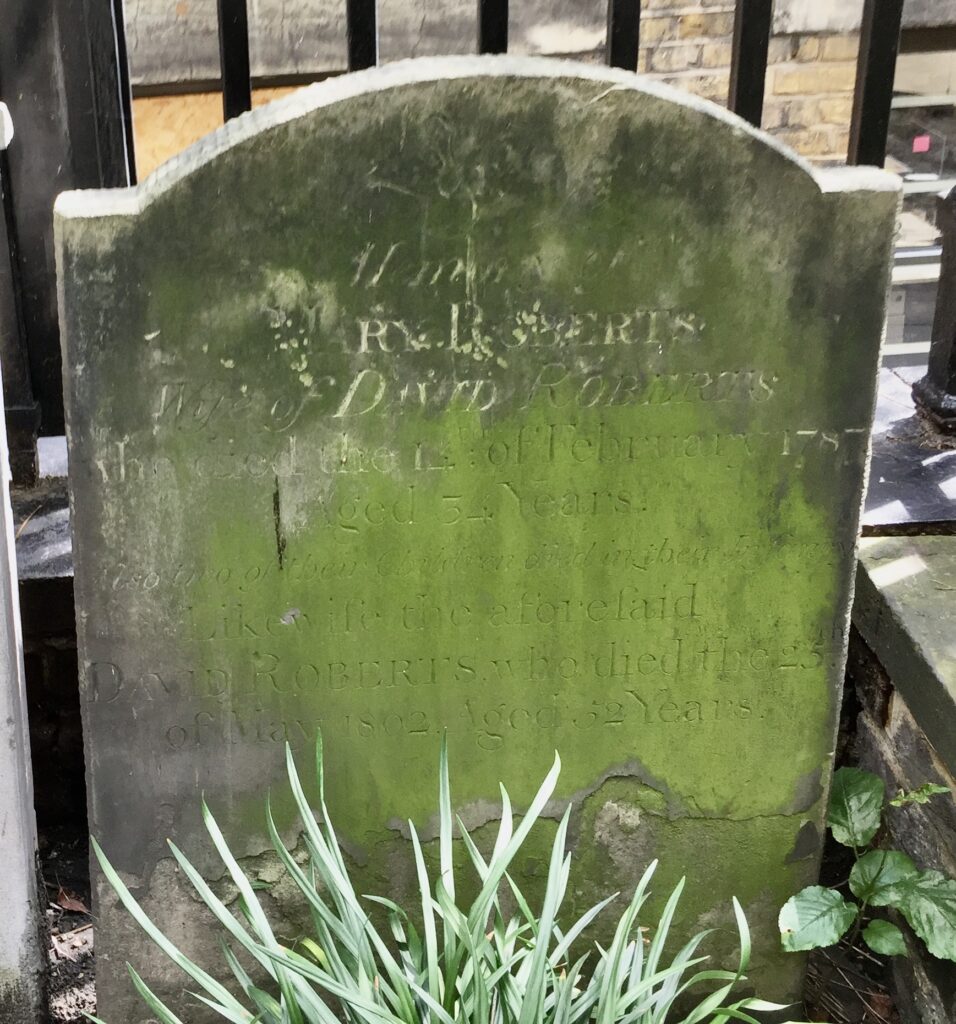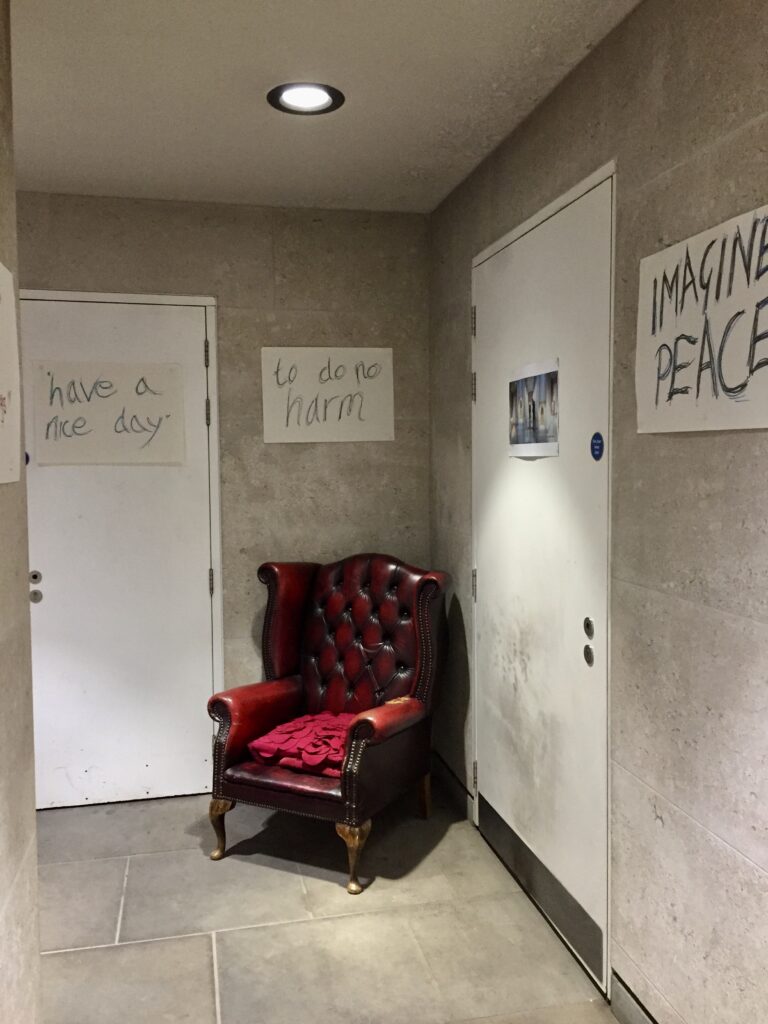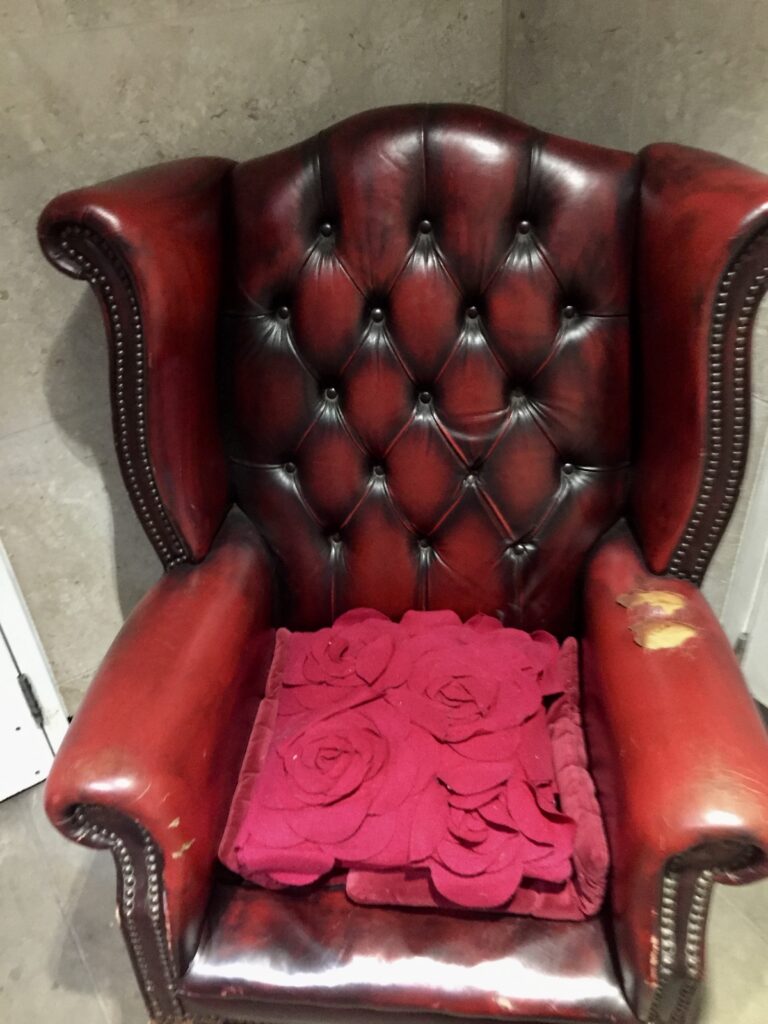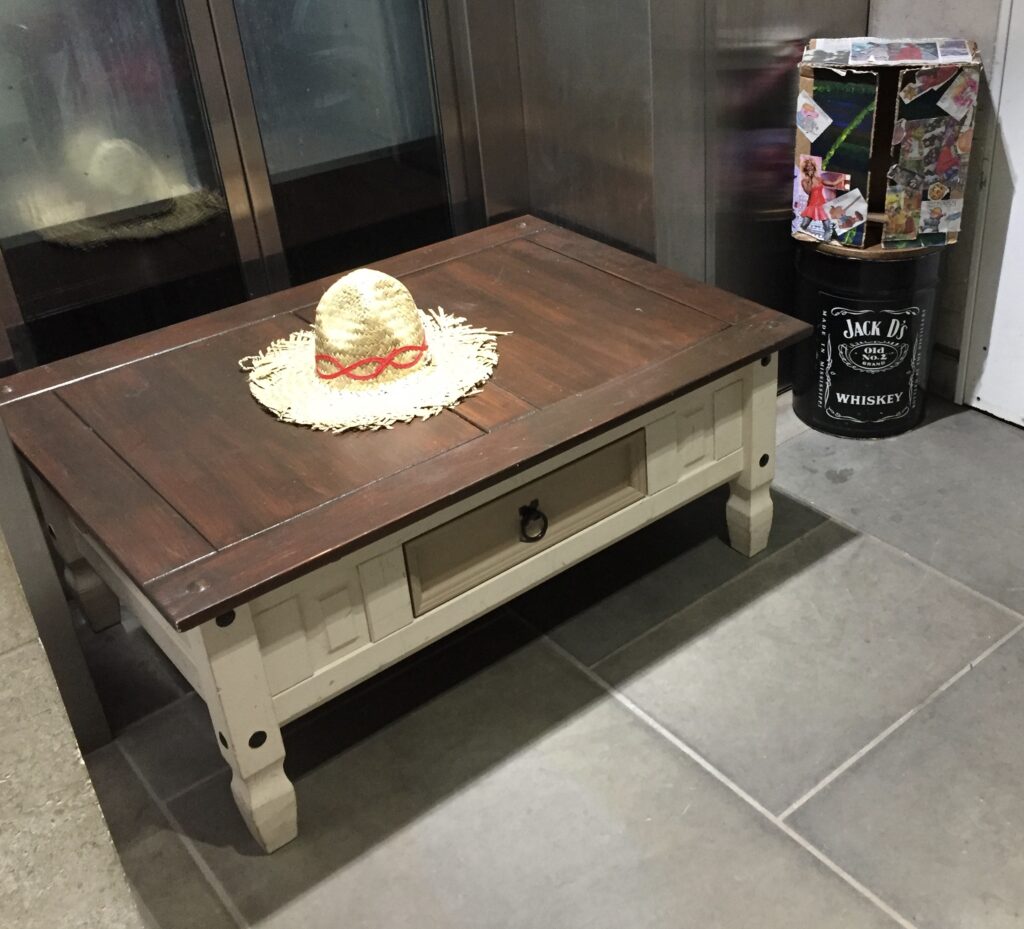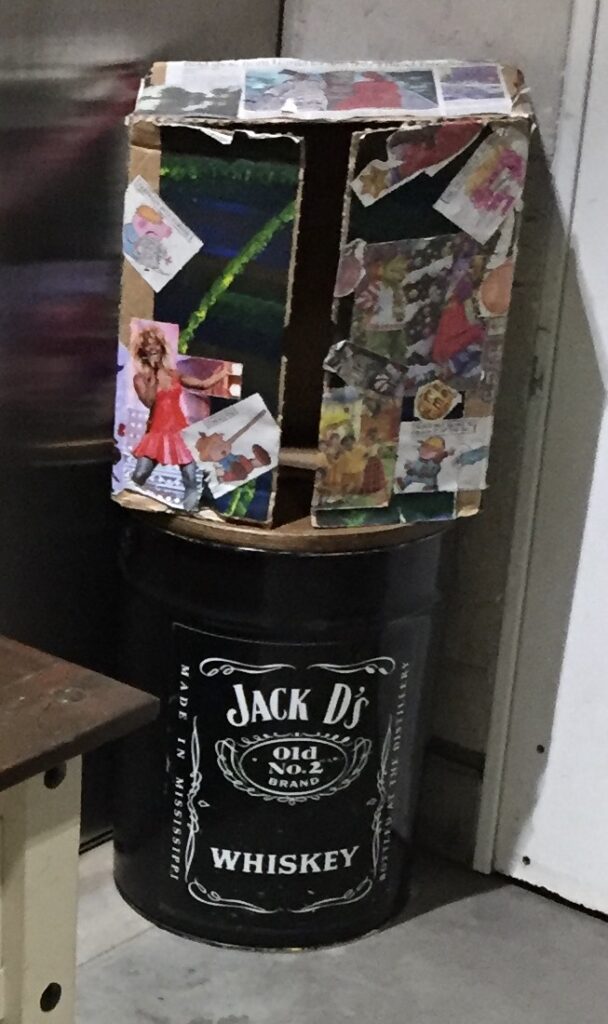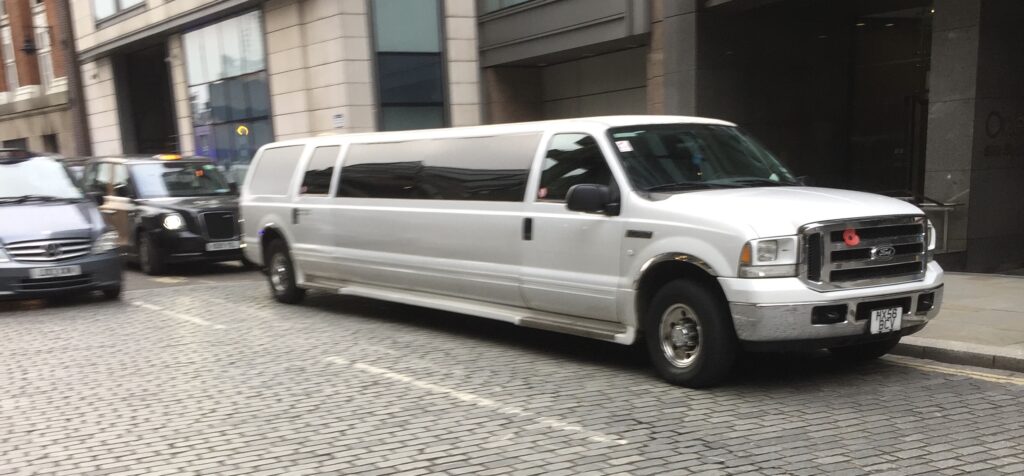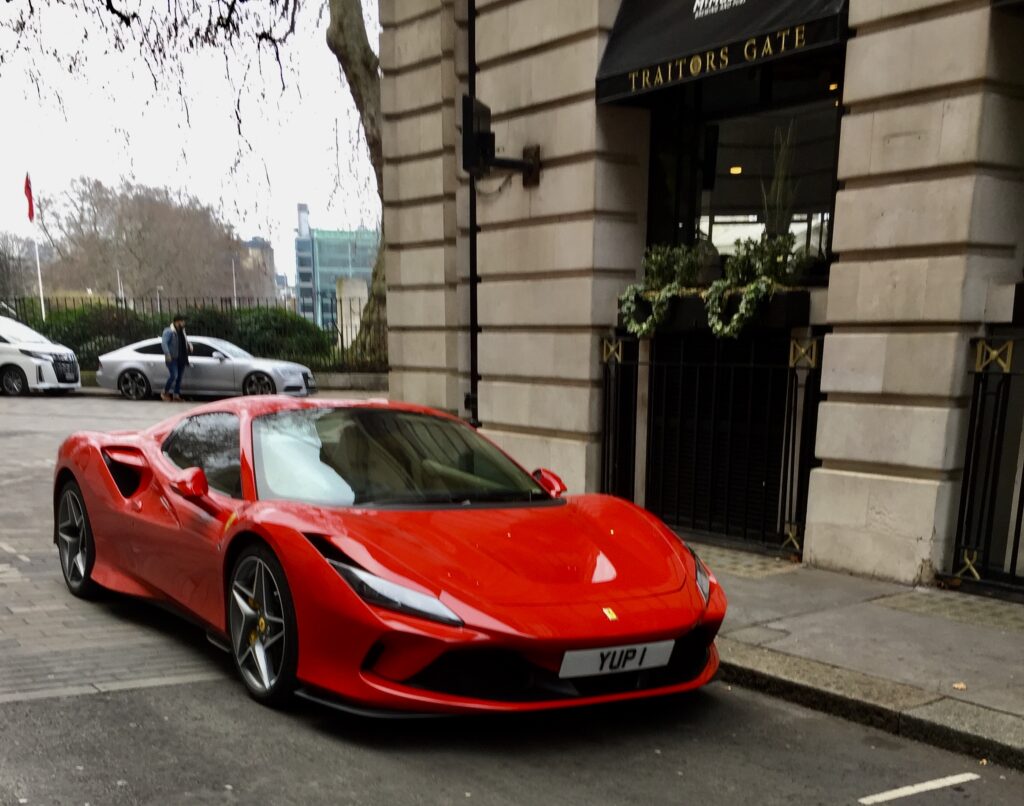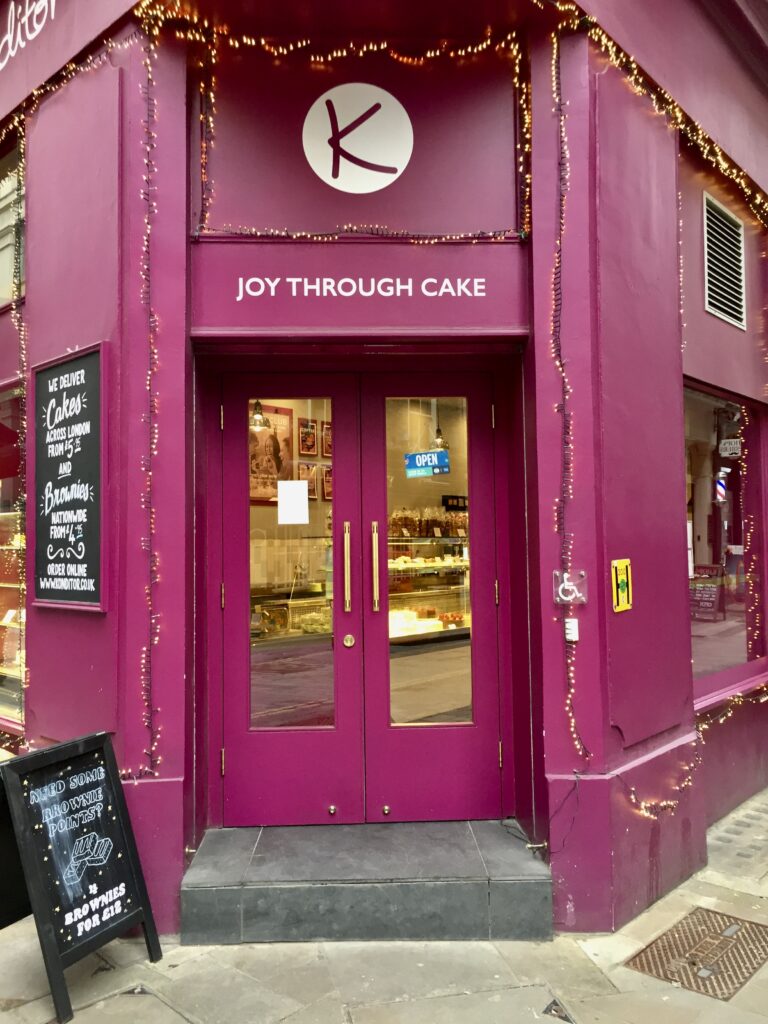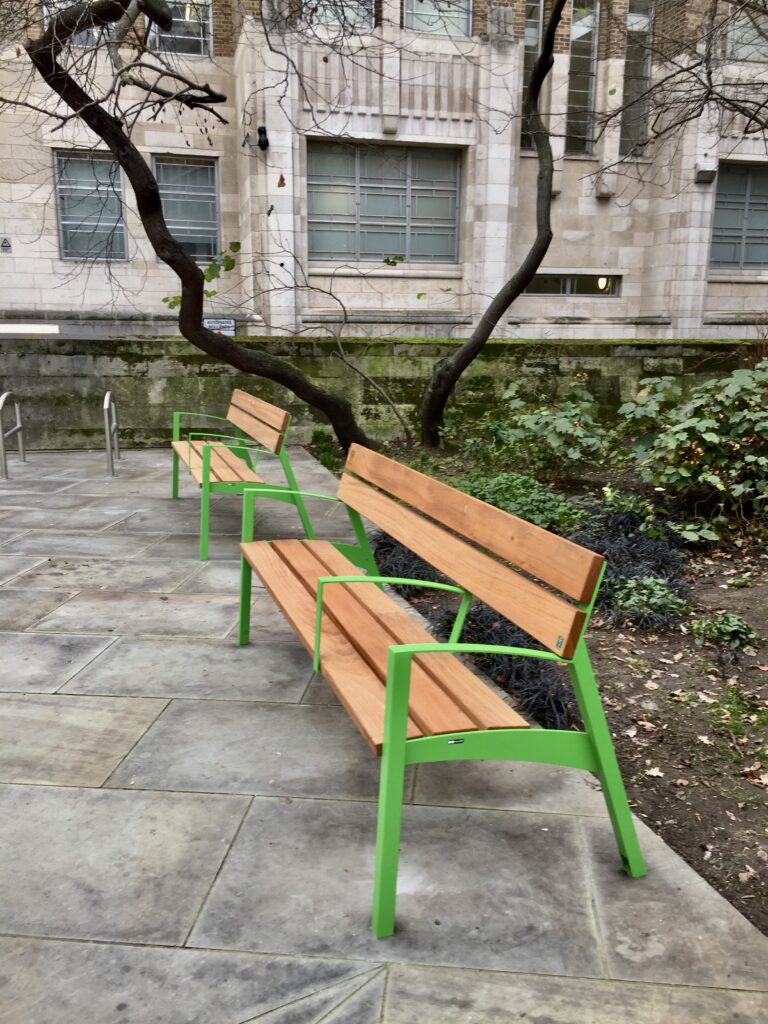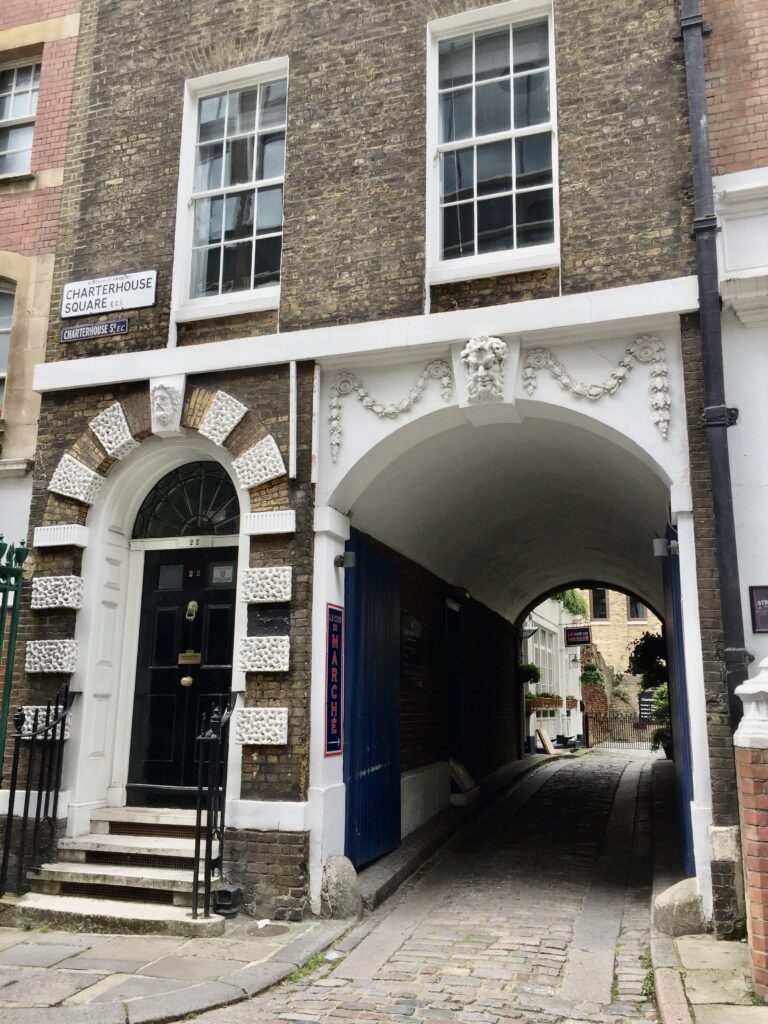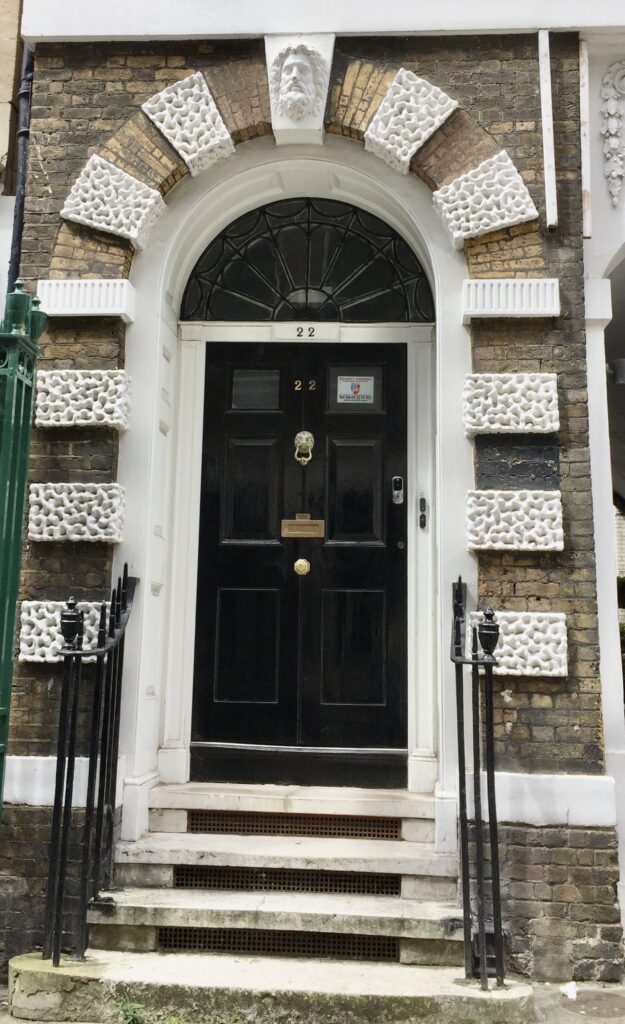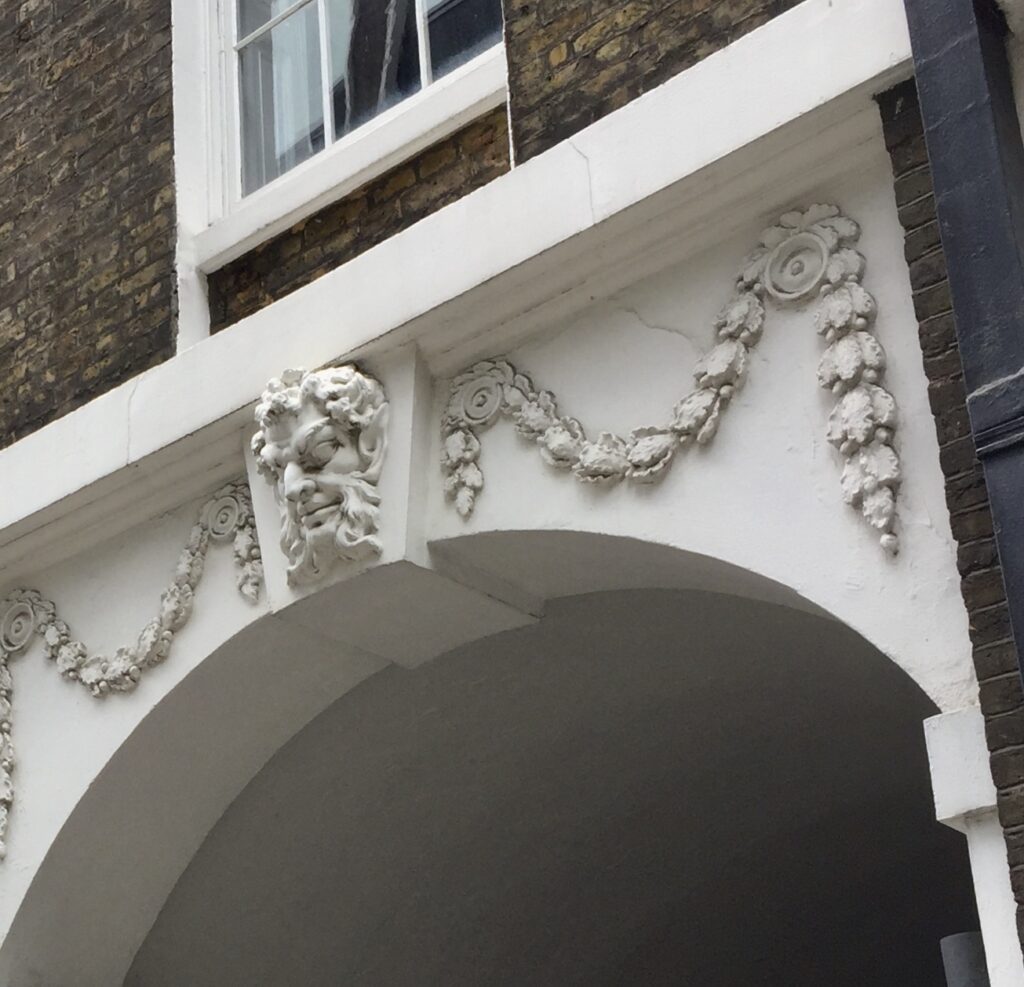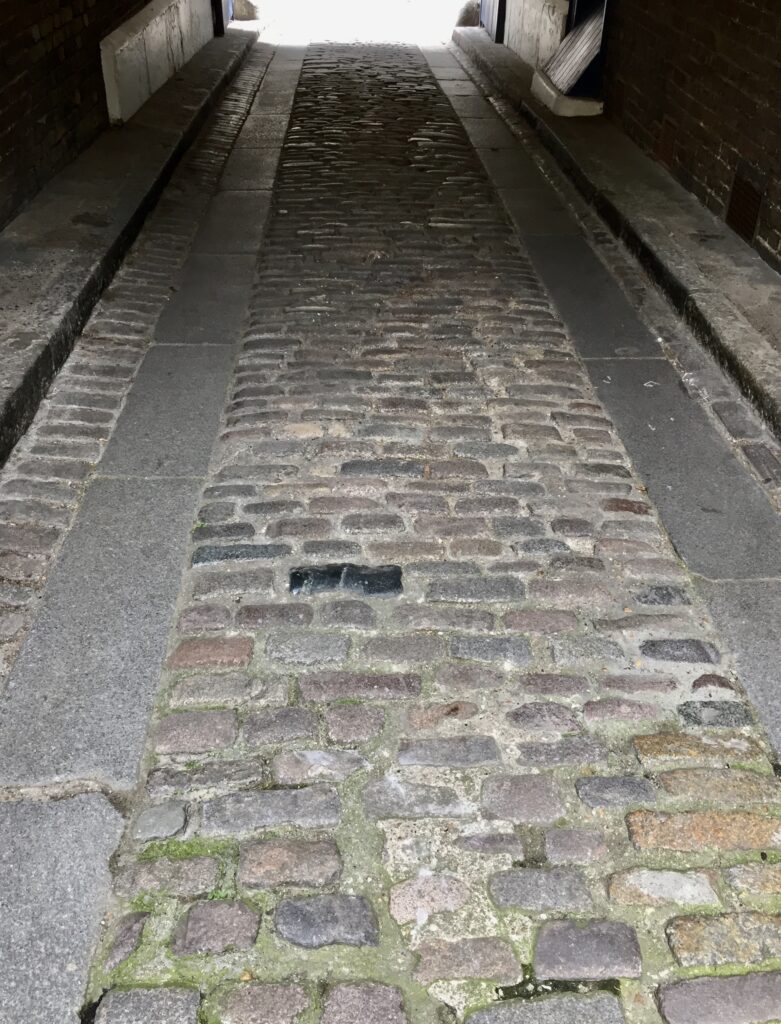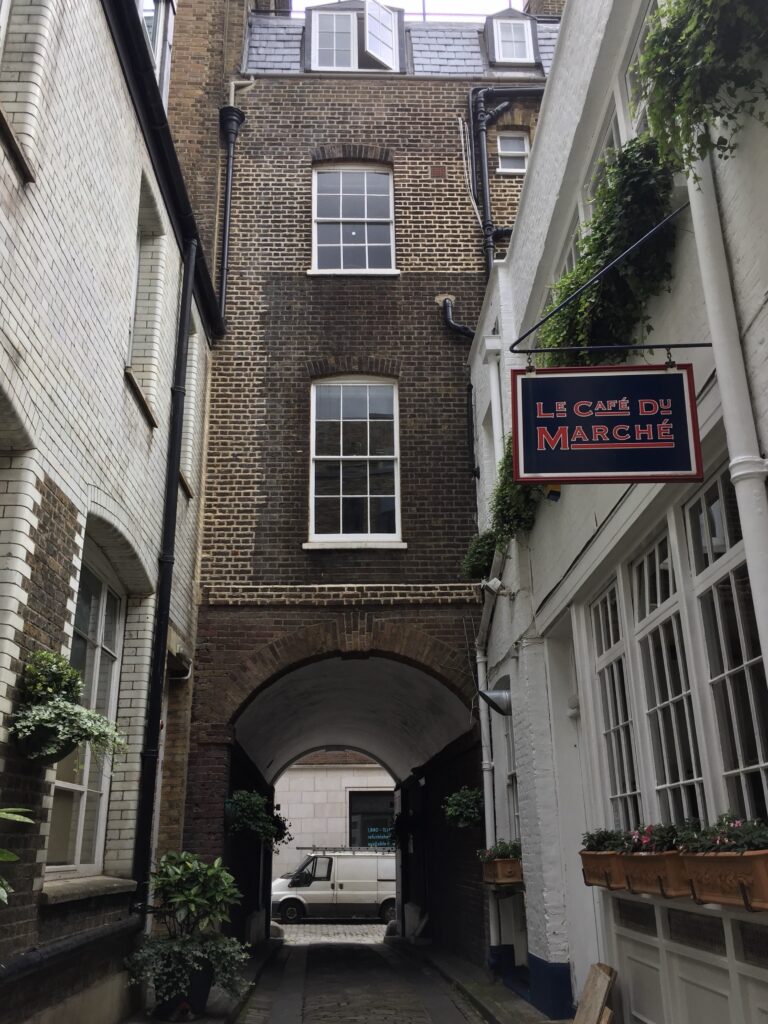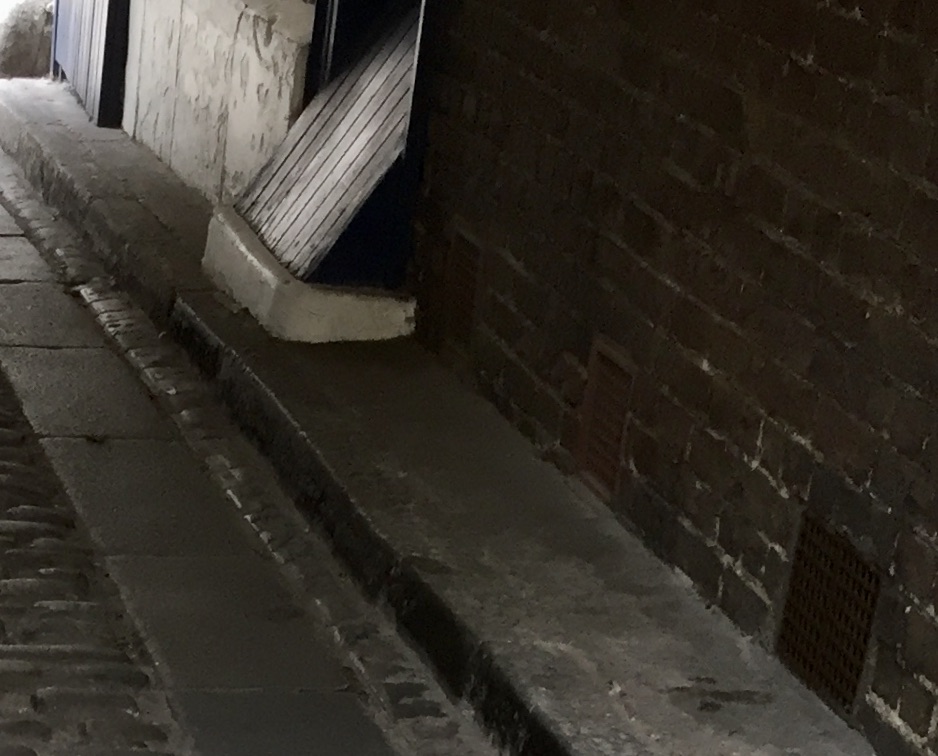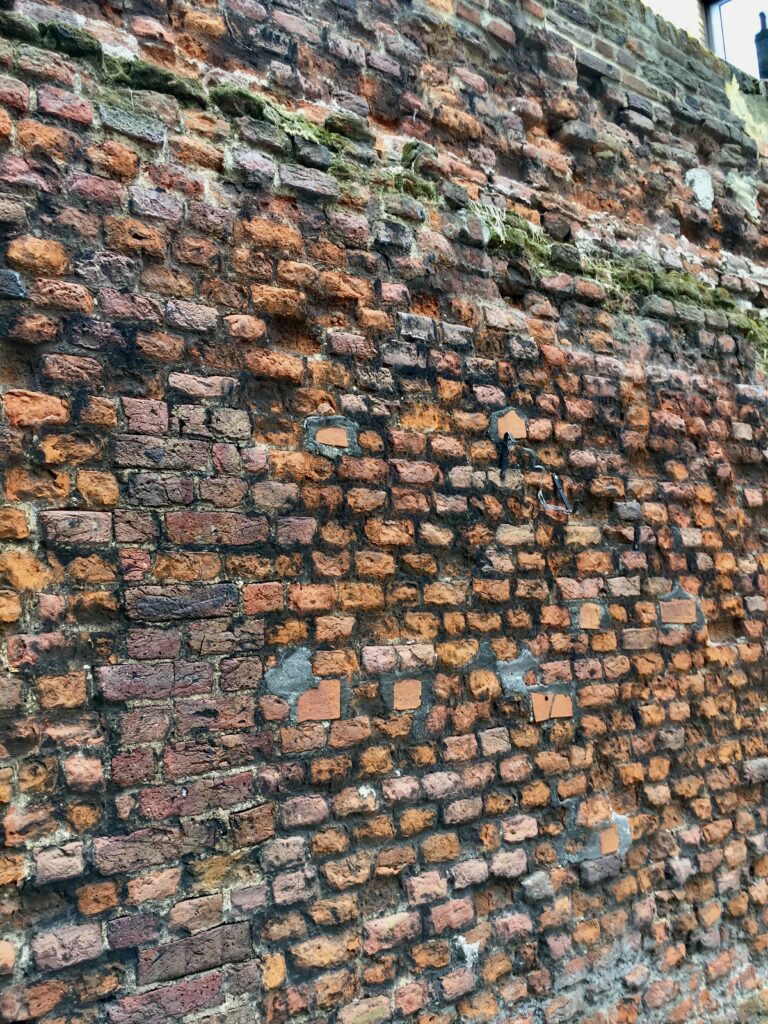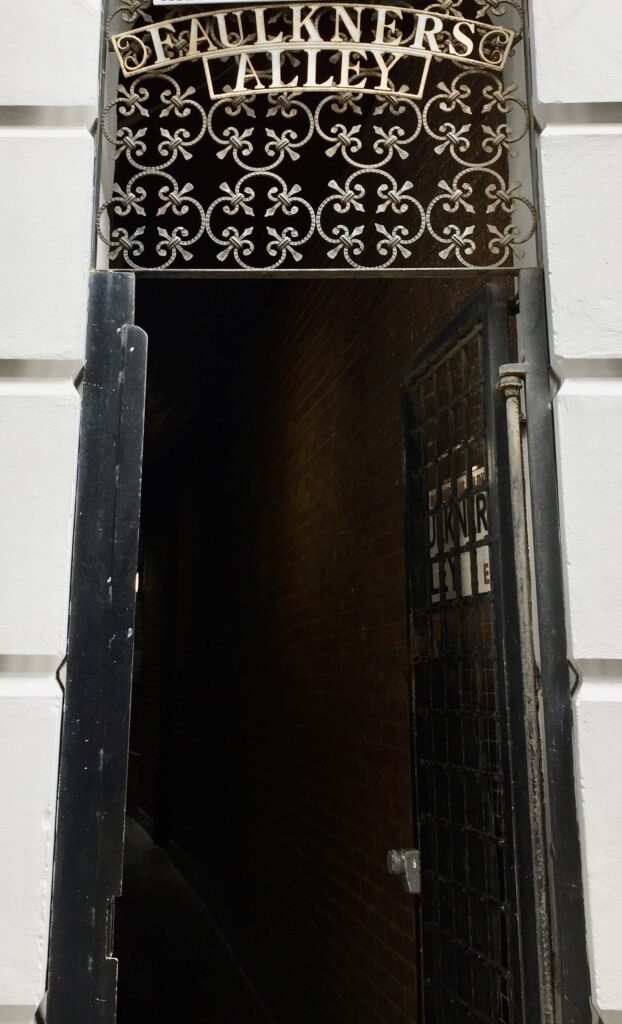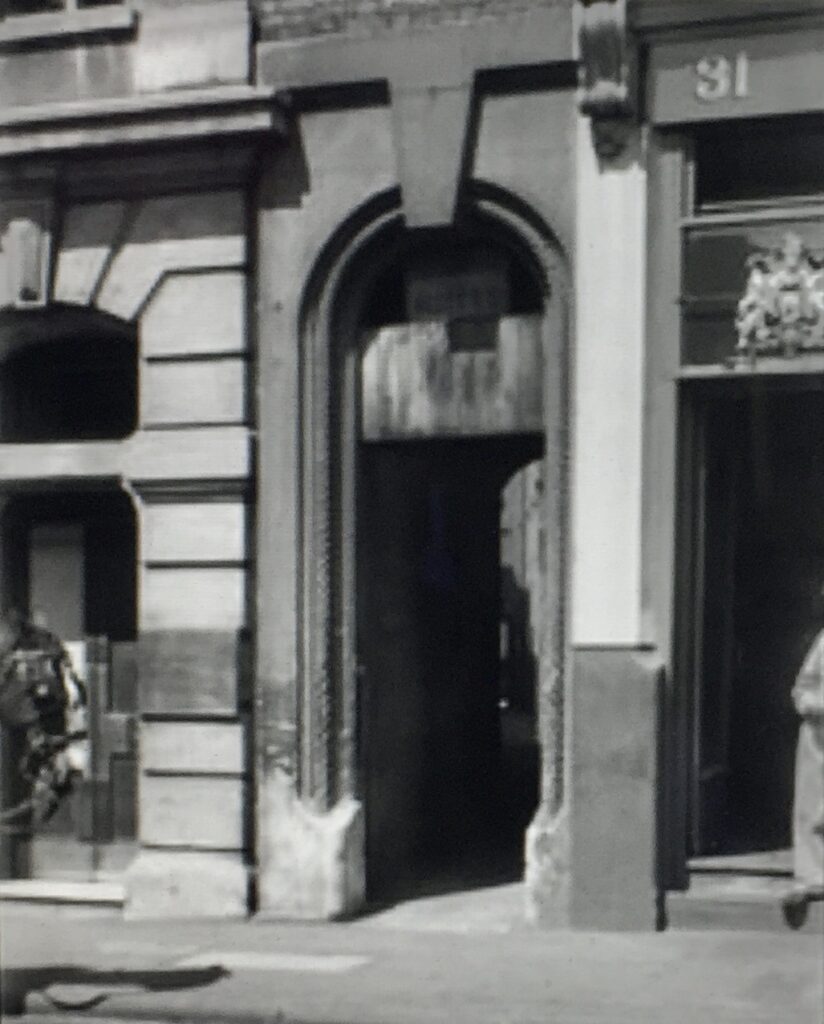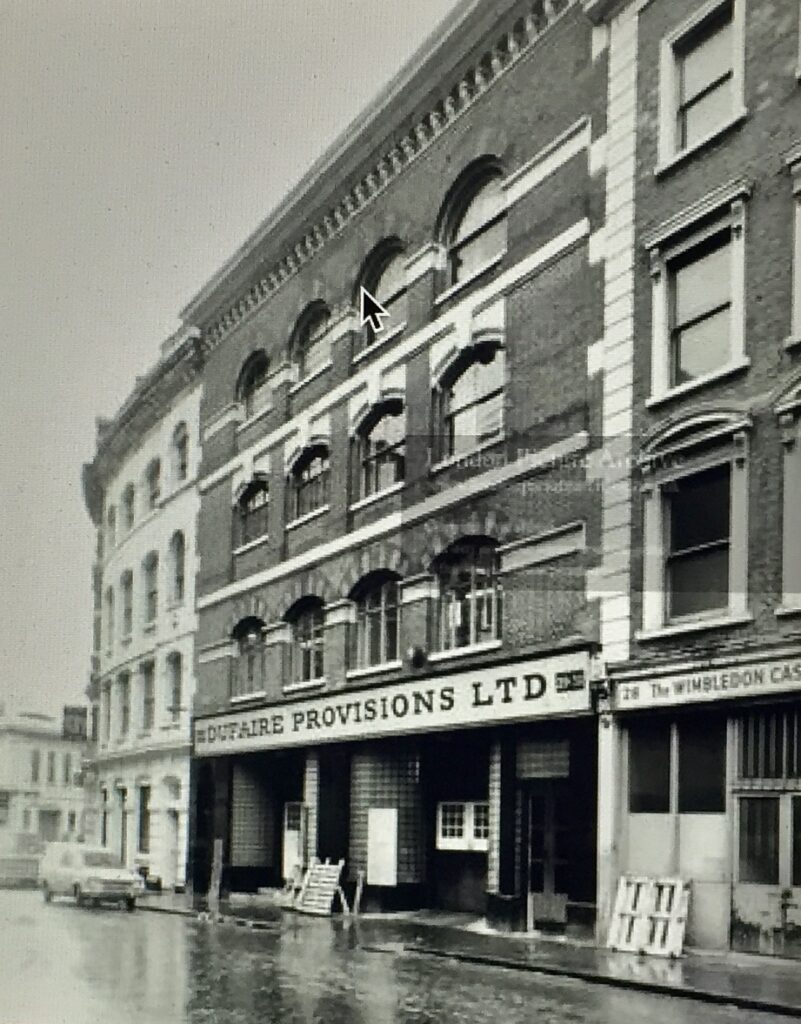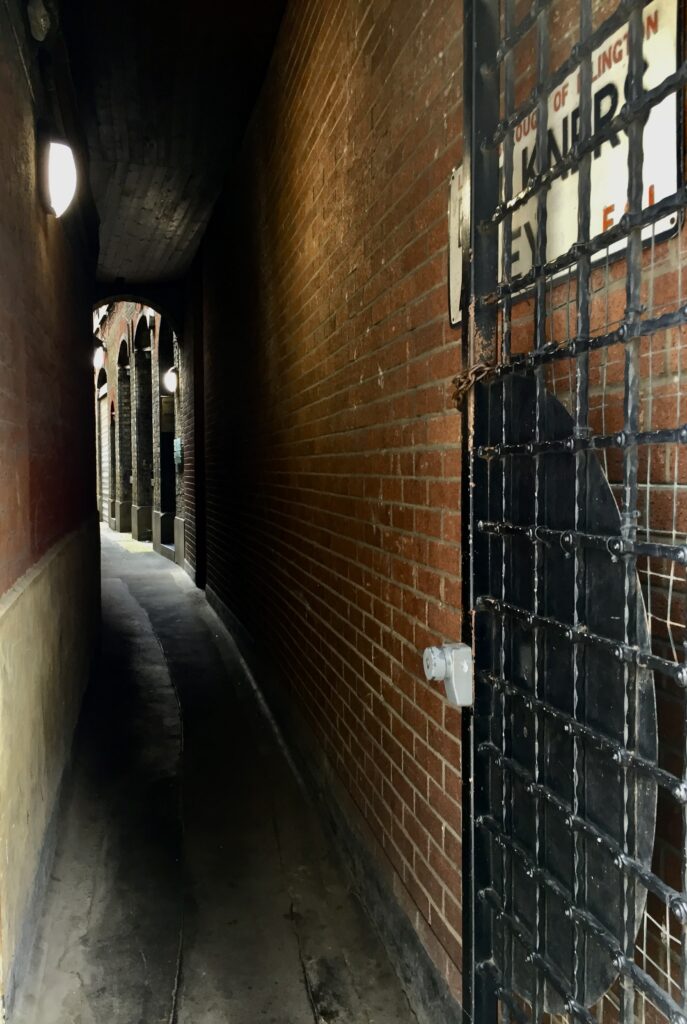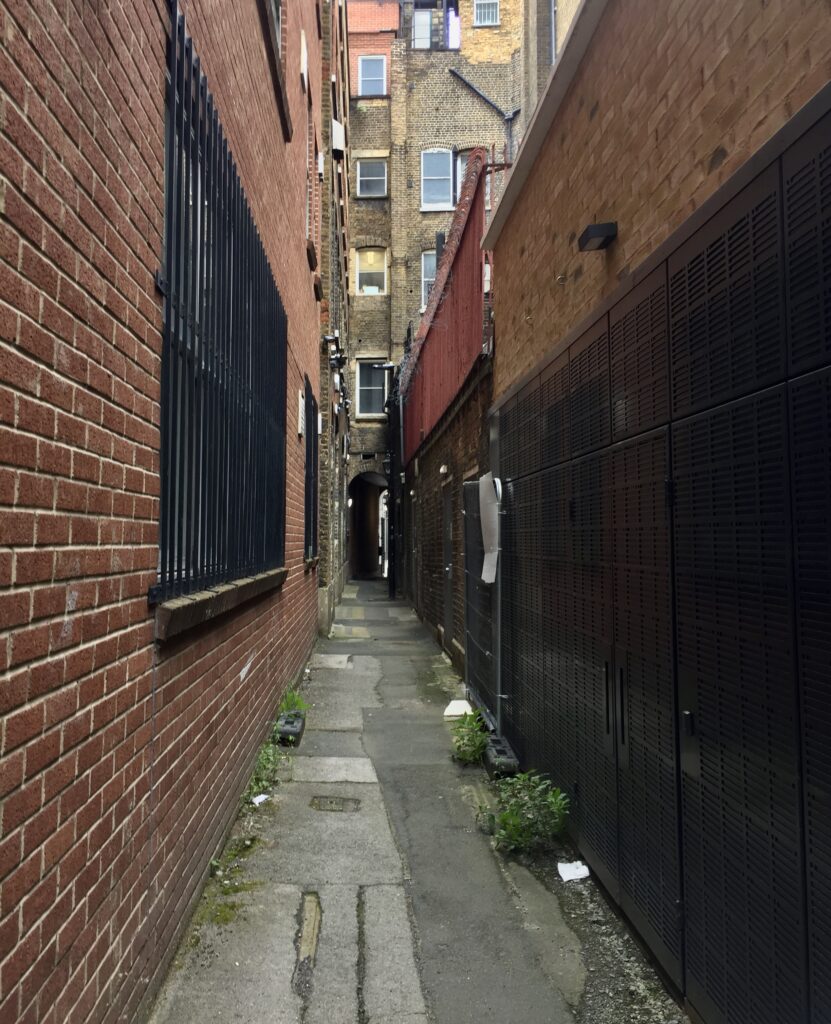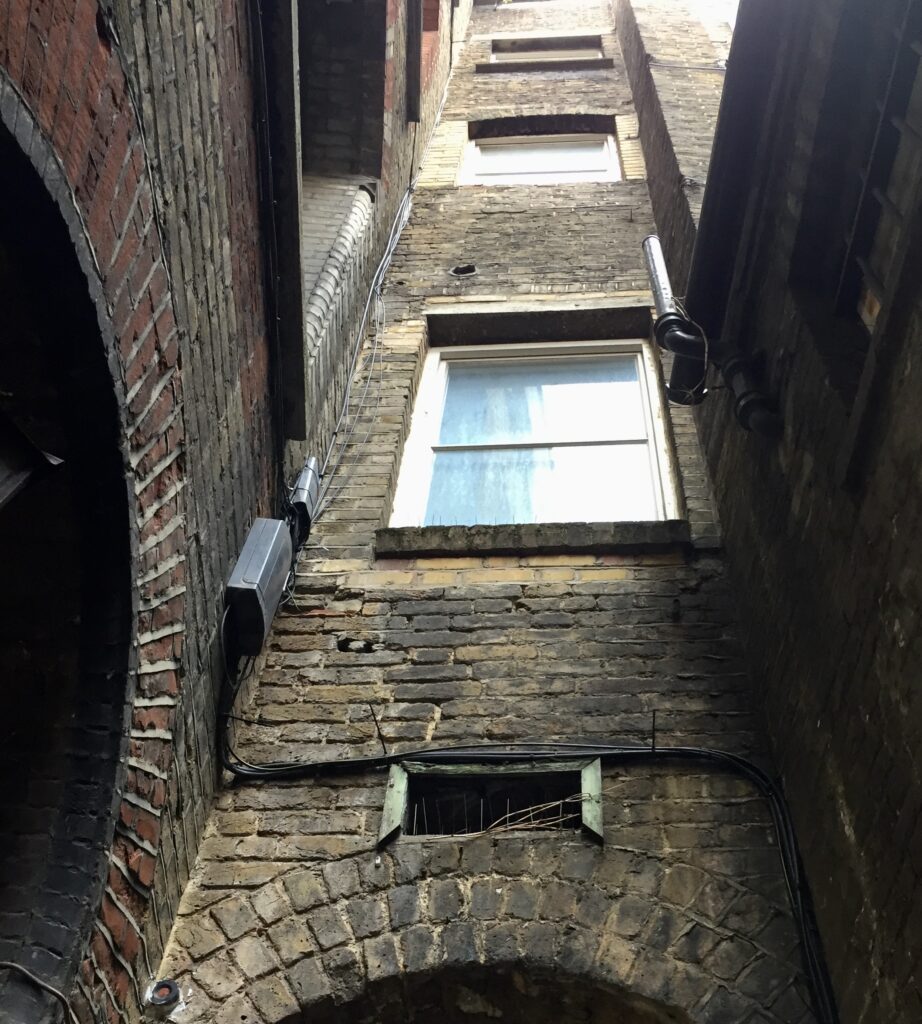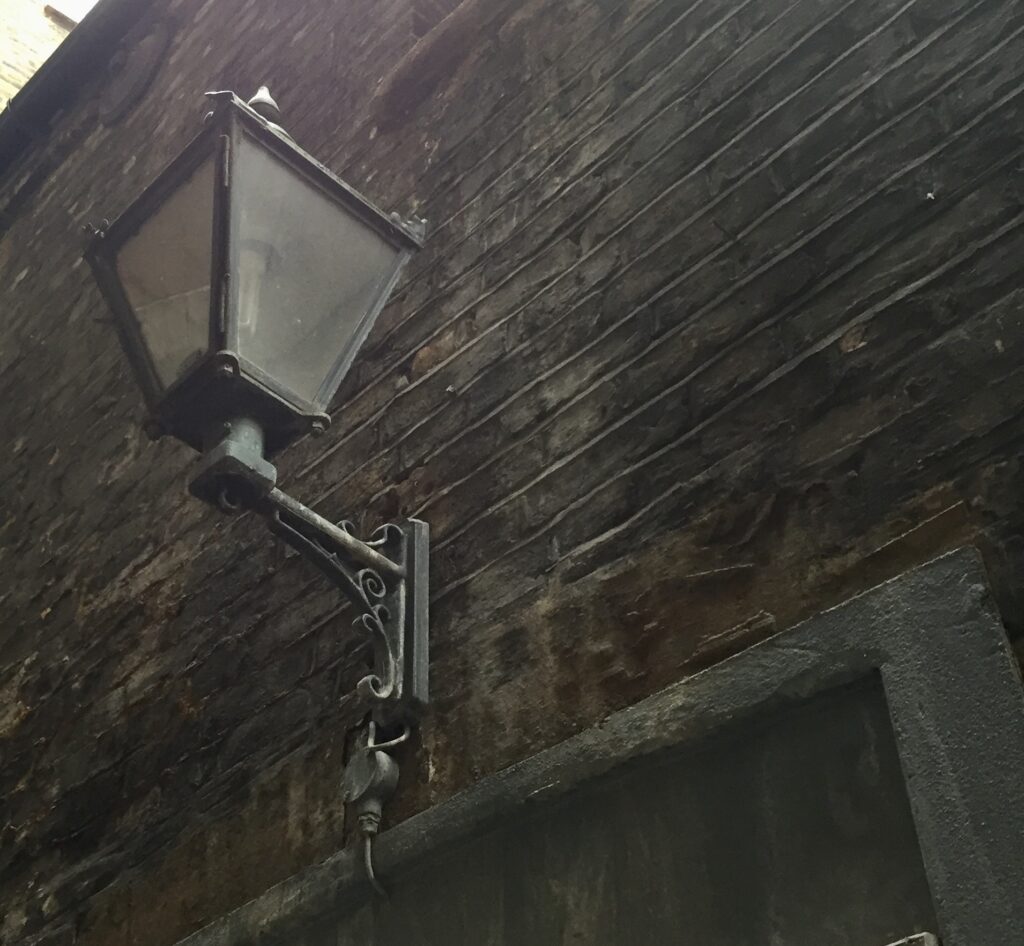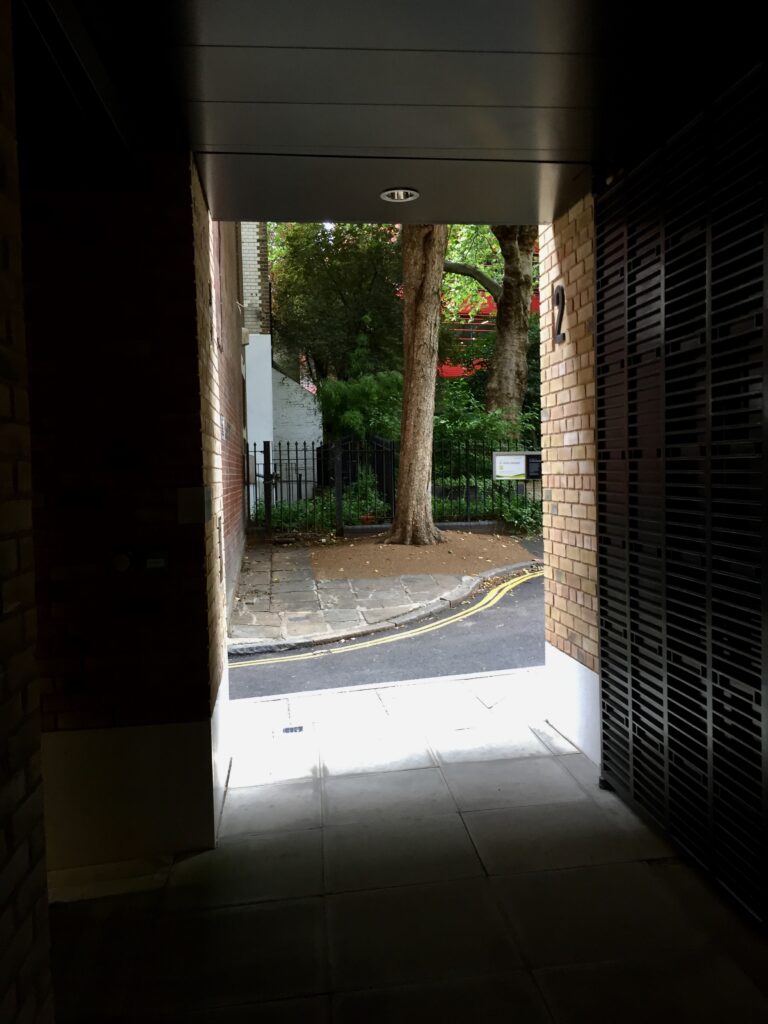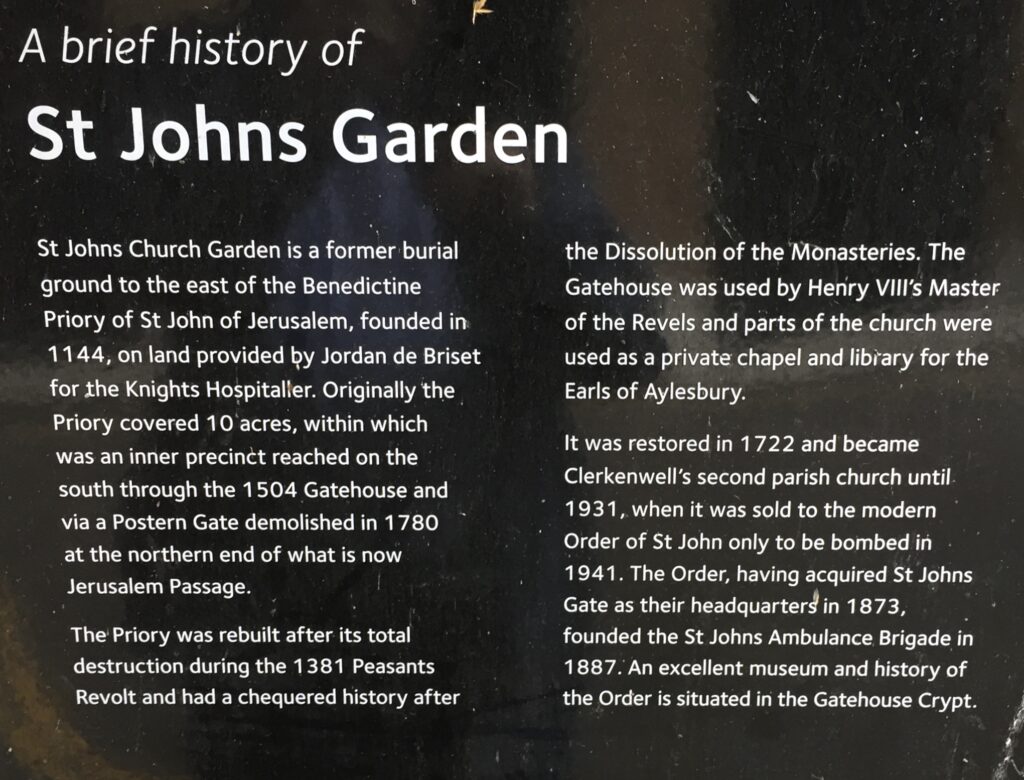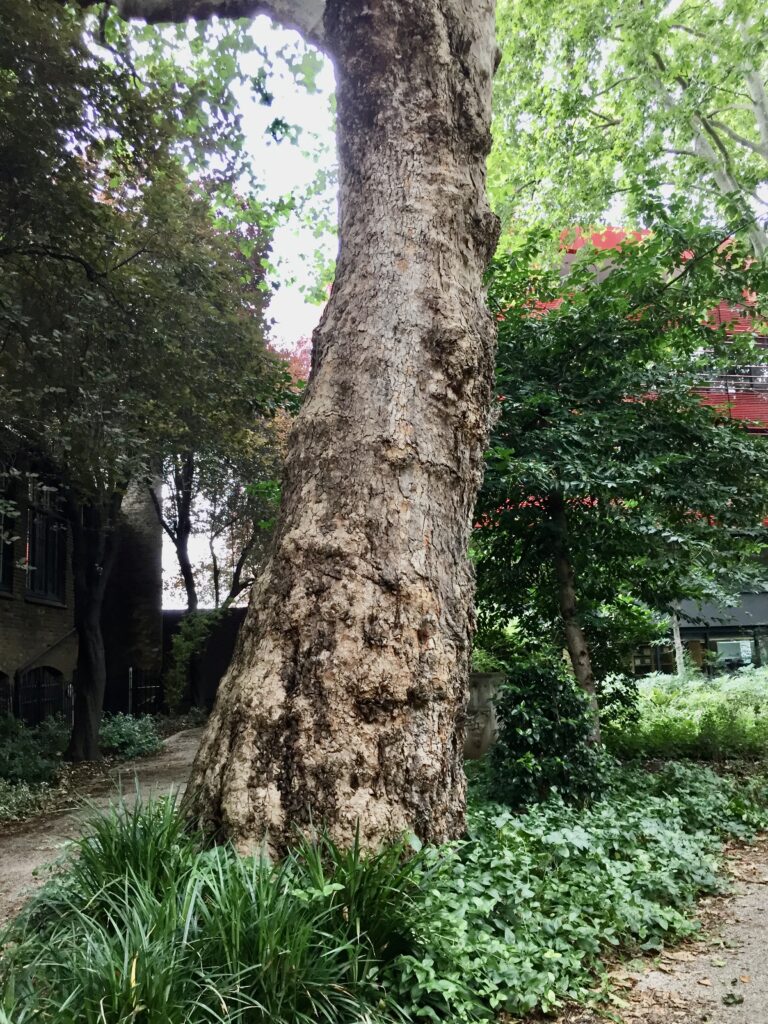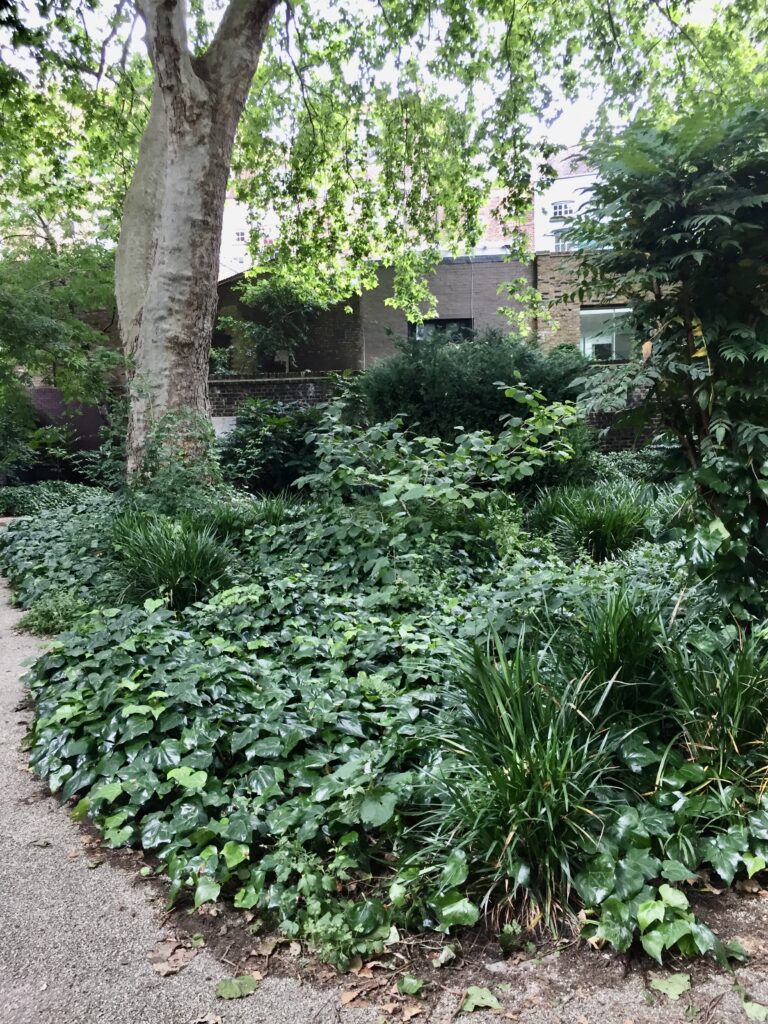Last Saturday I was once again drawn to the Seething Lane Garden. It was a sunny afternoon and I thought I’d revisit the wonderful carved paving stones that I have reported on before. The garden is much more open than it used to be …
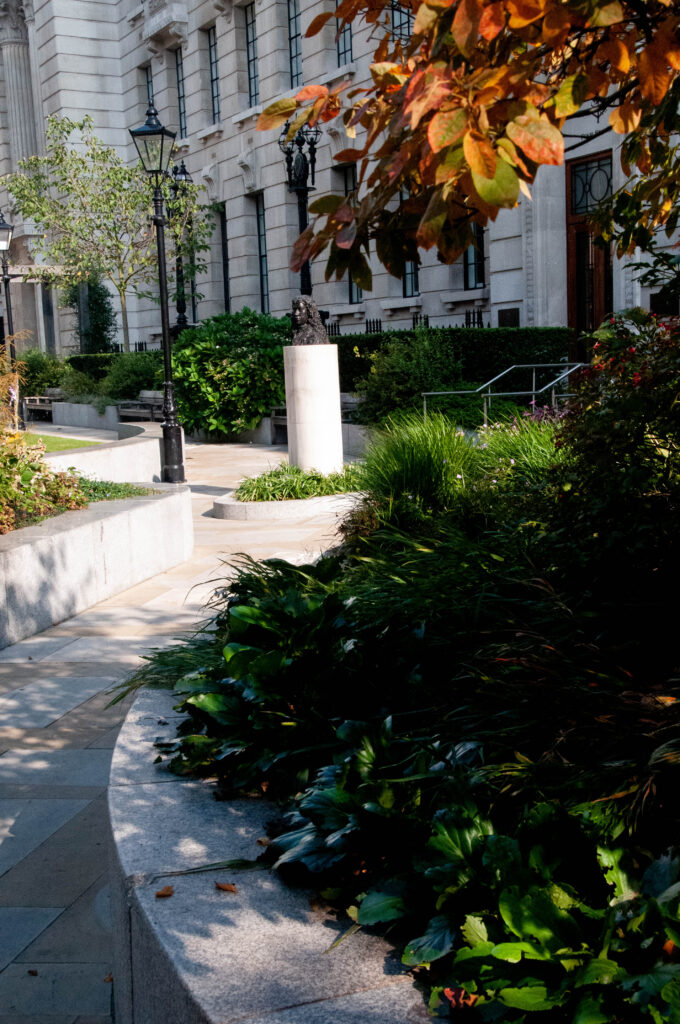
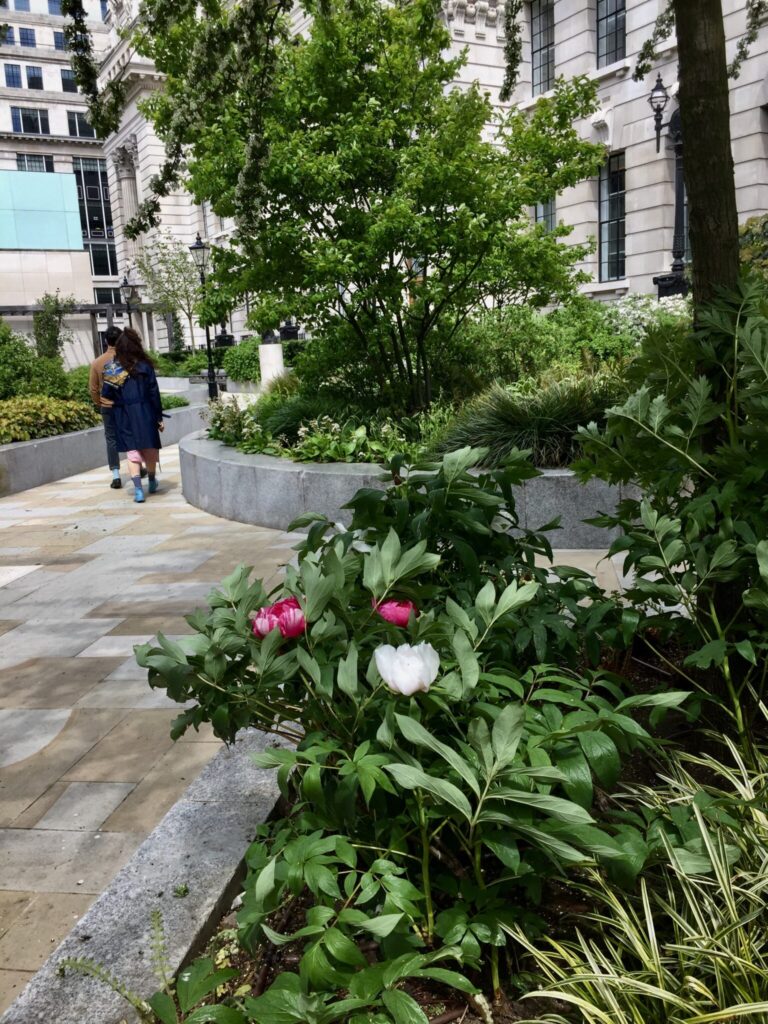
These are the carvings I like best out of the 30 that are laid there..
A scene from a Punch & Judy show …
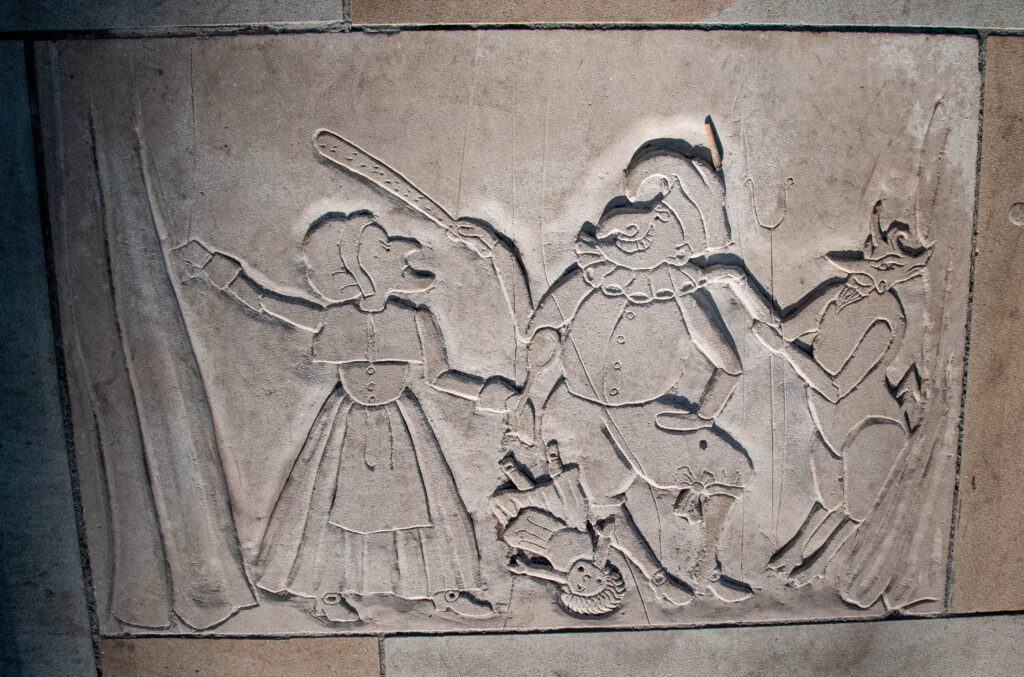
Trigger warning! They’ve dropped the baby …
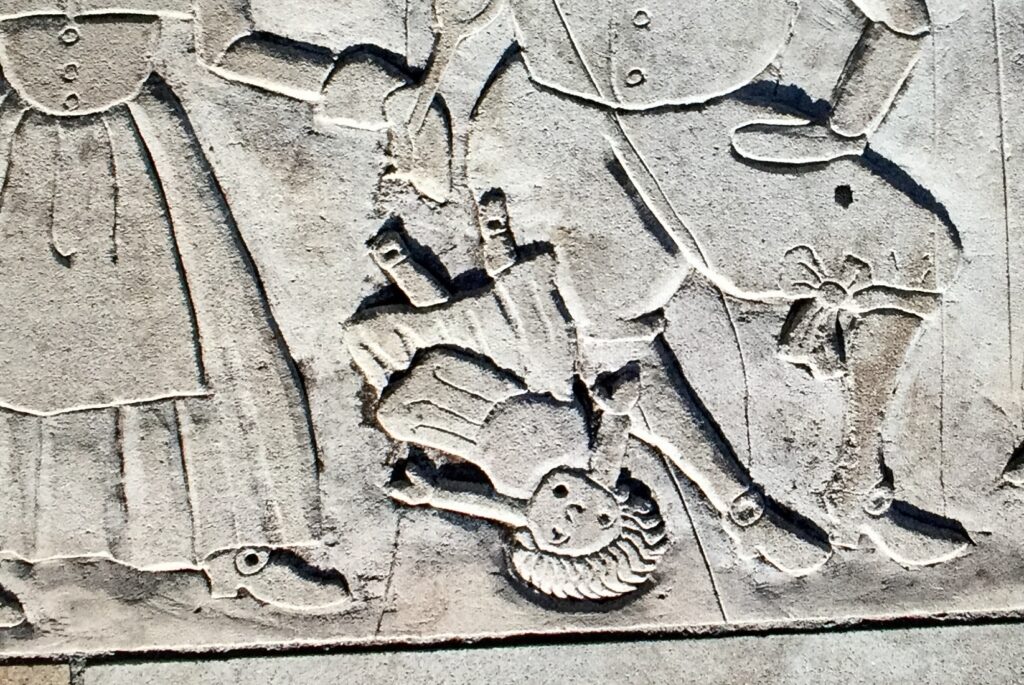
A monkey sitting on a pile of books chewing a rolled up document …
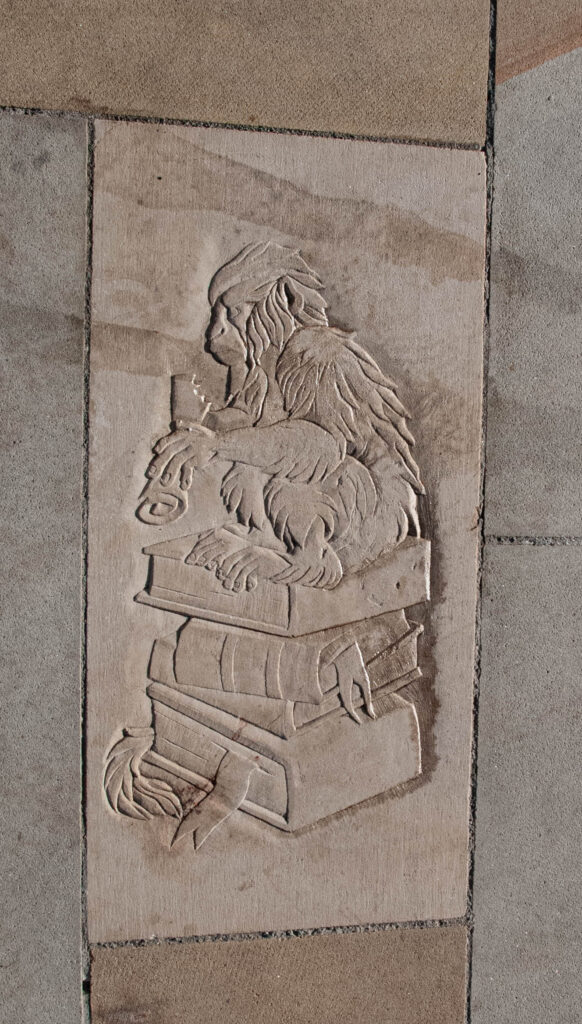
A meticulous representation of a flea …
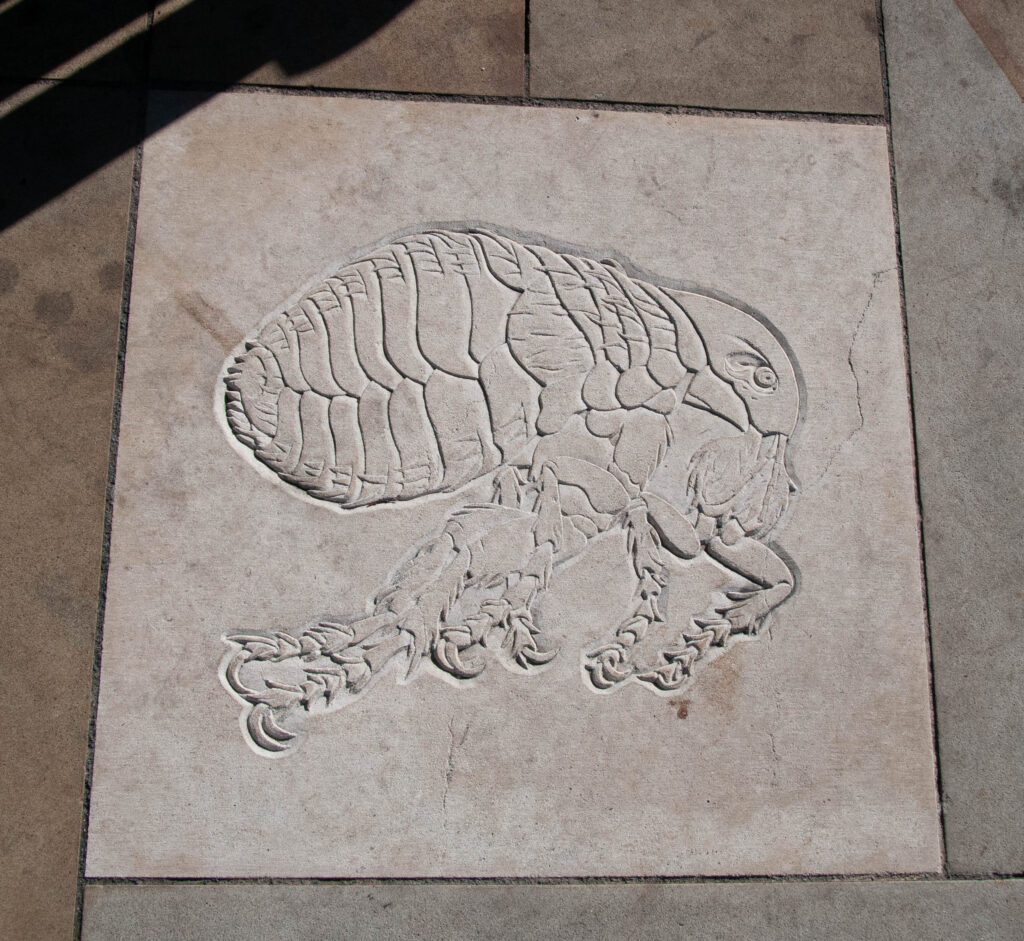
A plague doctor in 17th century PPE. He wouldn’t have known that the rat crouching cheekily at his feet was a carrier of the pestilence …
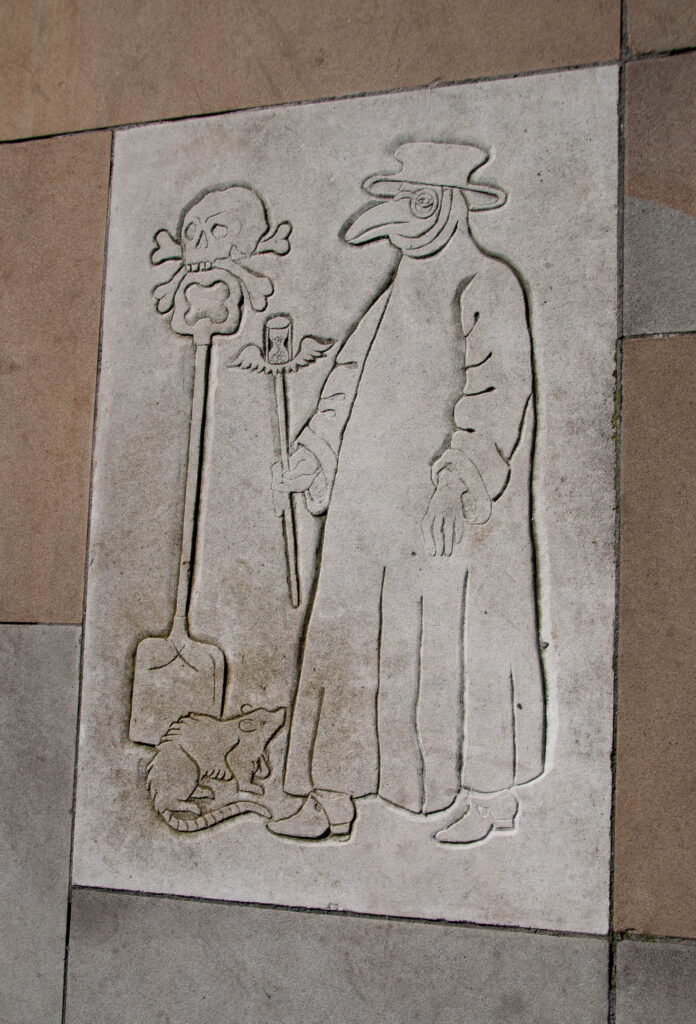
After his decapitation, the head of poor King Charles I is held up by the executioner …
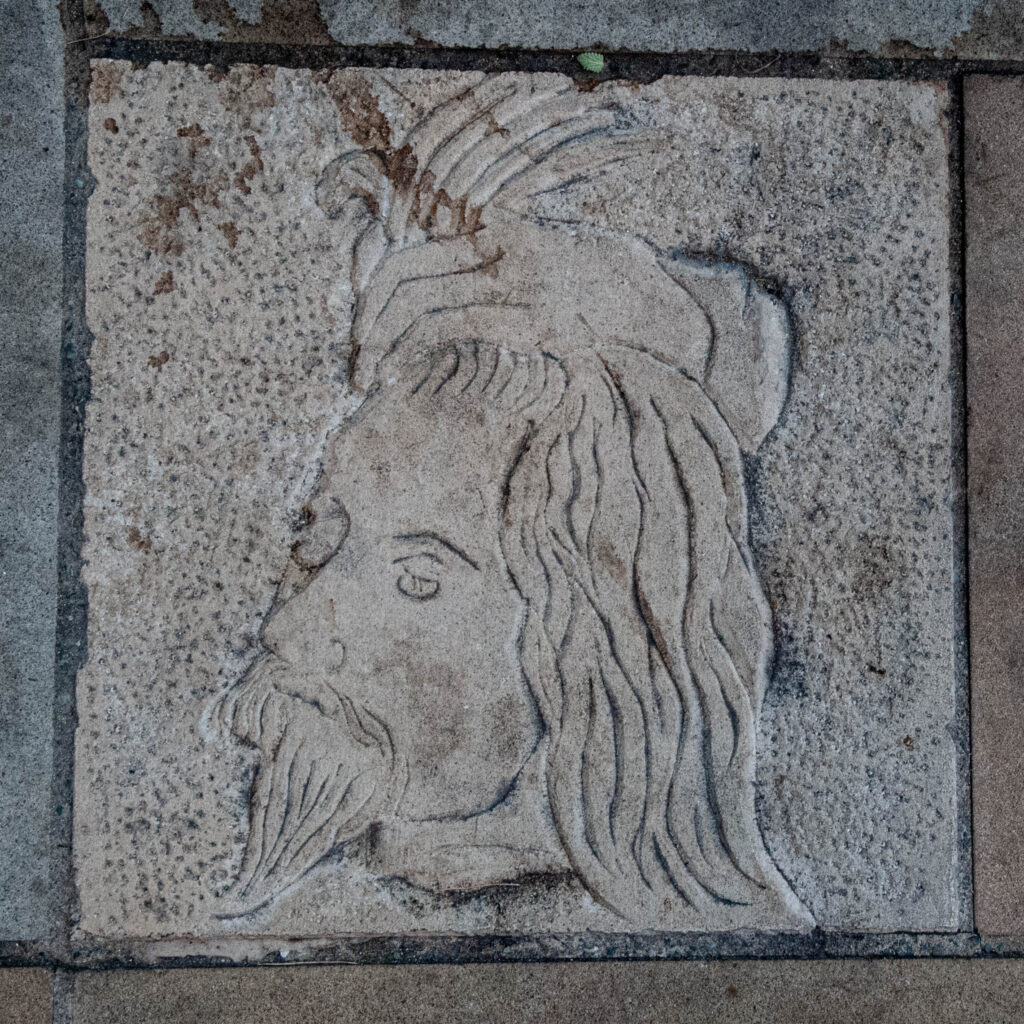
A very happy lion …
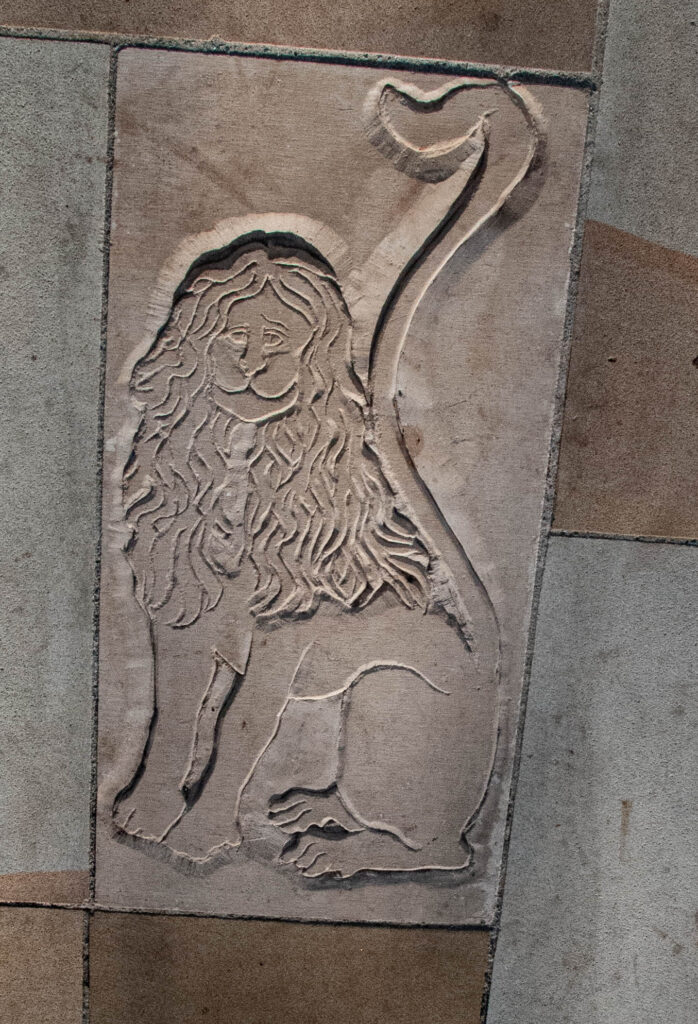
A galleon under full sail …

All the carvings refer to incidents in the life of Samuel Pepys – some of which are recorded in his famous diary. In the examples above, he wrote of visiting a Punch & Judy show, of his pet monkey getting loose and misbehaving, his purchase of Robert Hooke’s Micrographia (which contained the flea drawing) and his visit to the zoo to see an old lion called Crowly.
As a schoolboy he witnessed the execution of the King and in 1665 he stayed in London throughout the time of the plague (represented by the doctor). The galleon is the Royal Charles that brought Charles II back to England at the Restoration (and Pepys was on board). Trinitas refers to Trinity House where Pepys was a Master on two occasions.
He was in London during the Great Fire of 1666 and took a boat out on the River Thames to witness the destruction …
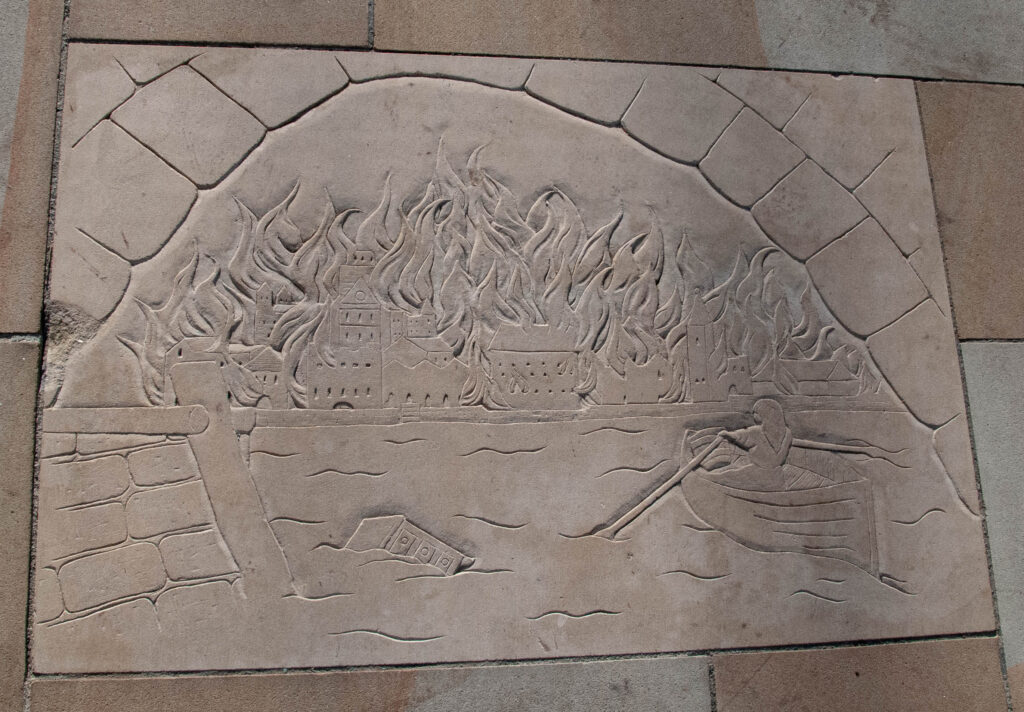
Note the piece of furniture floating past.
At the age of 25 he survived an operation to remove a bladder stone ‘the size of a tennis ball’ and this too is represented in the garden …
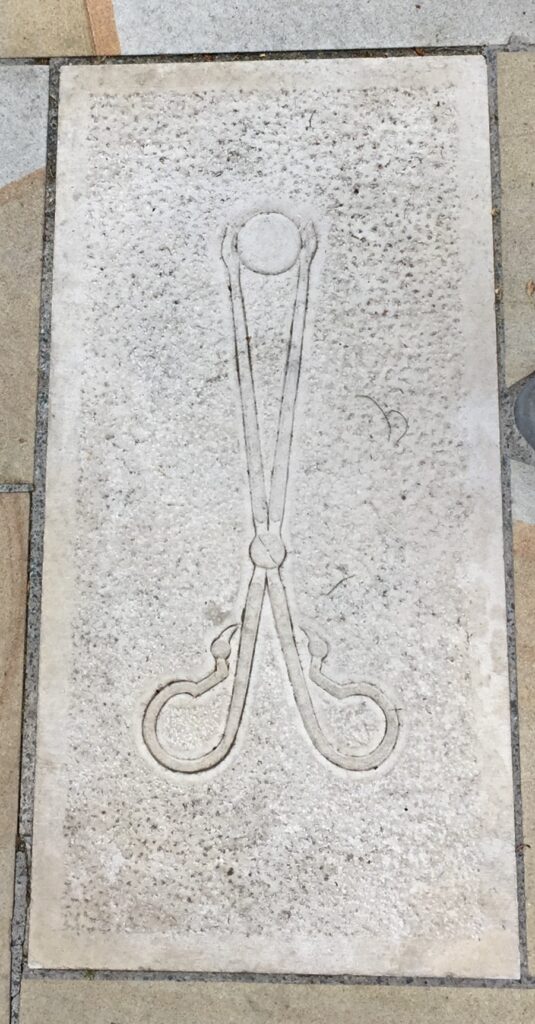
Pepys is commemorated with a splendid bust by Karin Jonzen (1914-1998), commissioned and erected by The Samuel Pepys Club in 1983 …
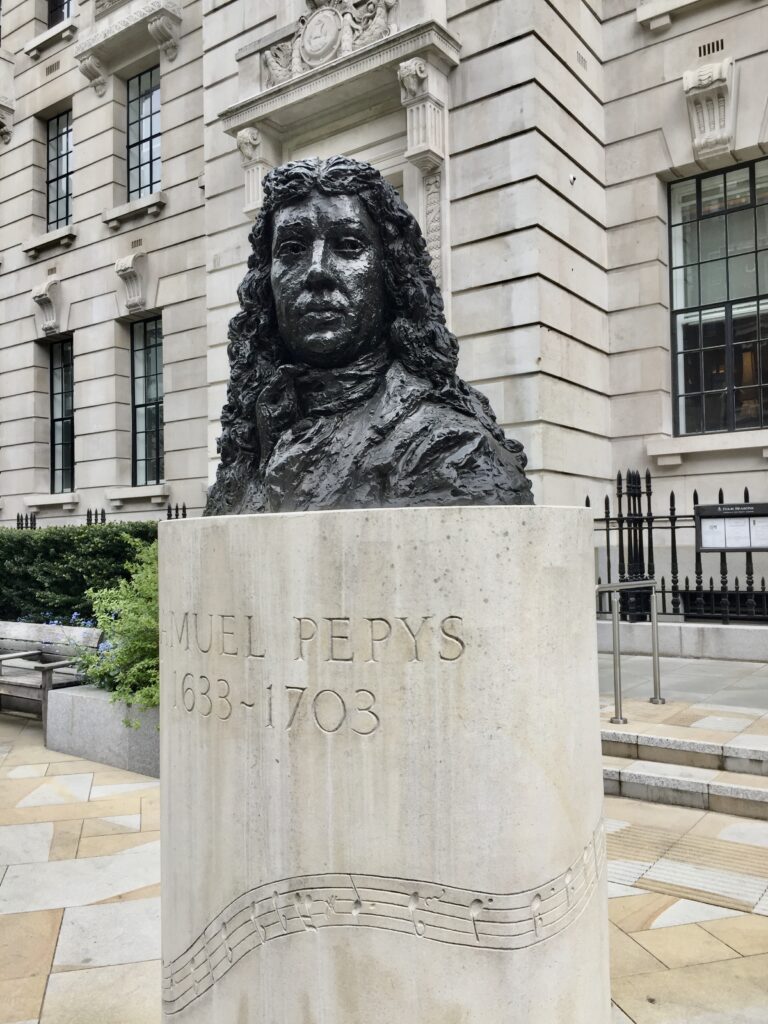
The plinth design was part of the recent project and the music carved on it is the tune of Beauty Retire, a song that Pepys wrote. So if you read music you can hear Pepys as well as see his bust …
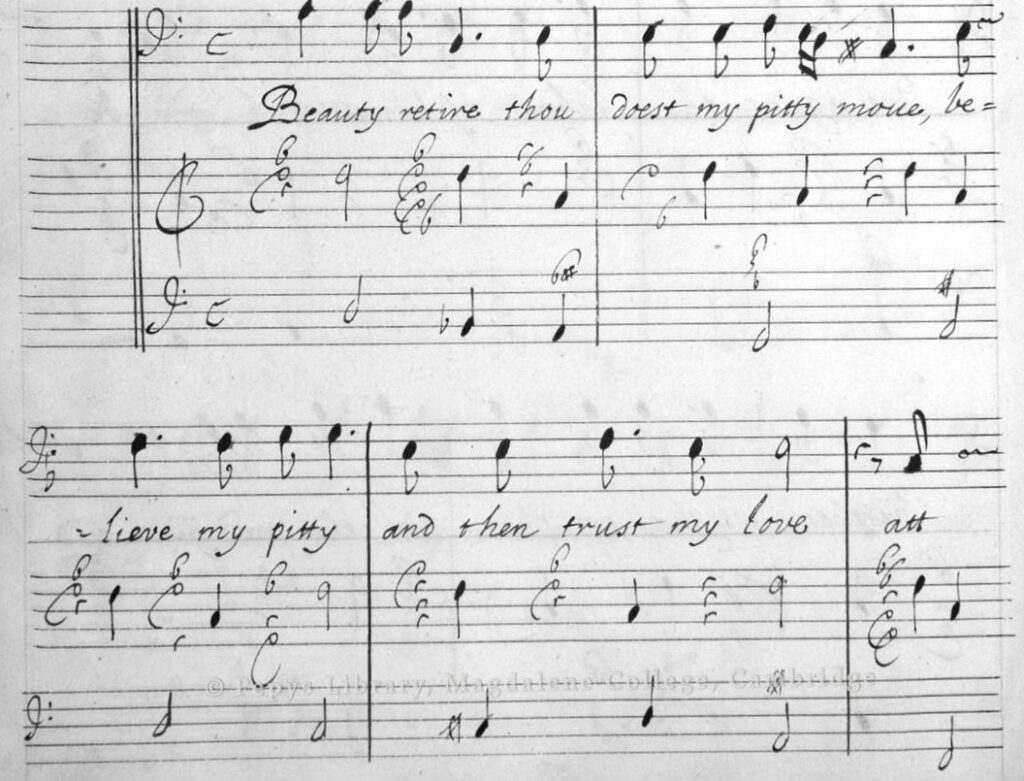
Pepys was evidently extremely proud of Beauty Retire, for he holds a copy of the song in his most famous portrait by John Hayls, now in the National Portrait Gallery. A copy of the portrait hangs in the Pepys Library …
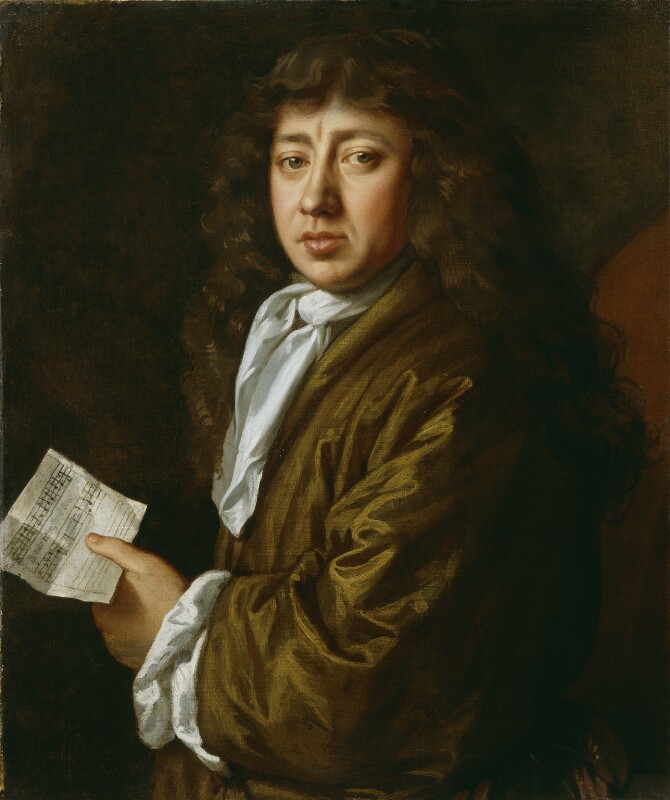
The paving designs were created by a team of students and alumni of City & Guilds London Art School working under the direction of Alan Lamb of Swan Farm Studios Ltd. Here are some pictures of the sculptors at work.
Tom Ball working on the flea …
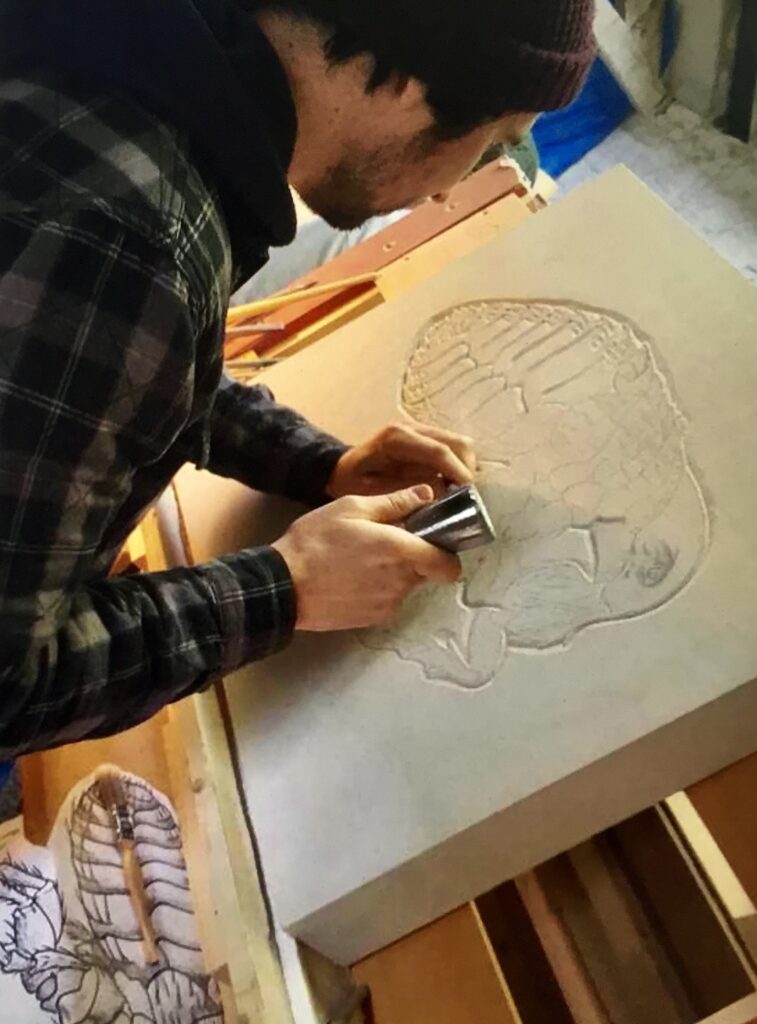
Mike Watson working on Pepys’s monogram …
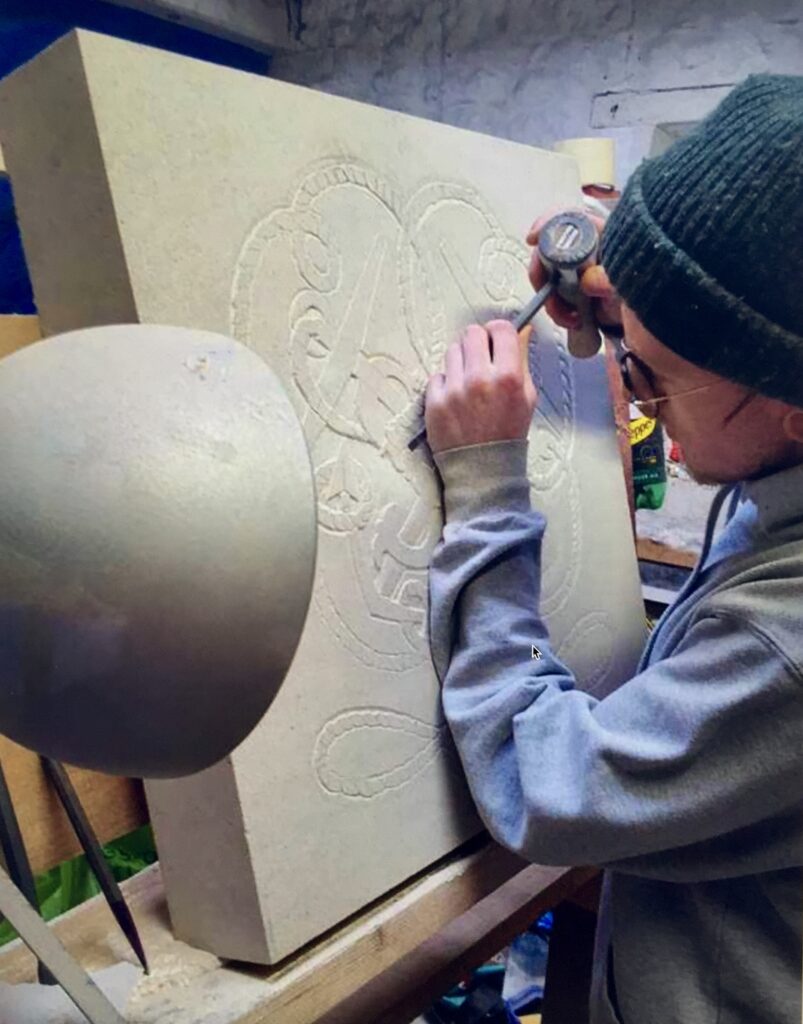
And finally, Alan Lamb working on a theorbo lute, one of many instruments Pepys could play …
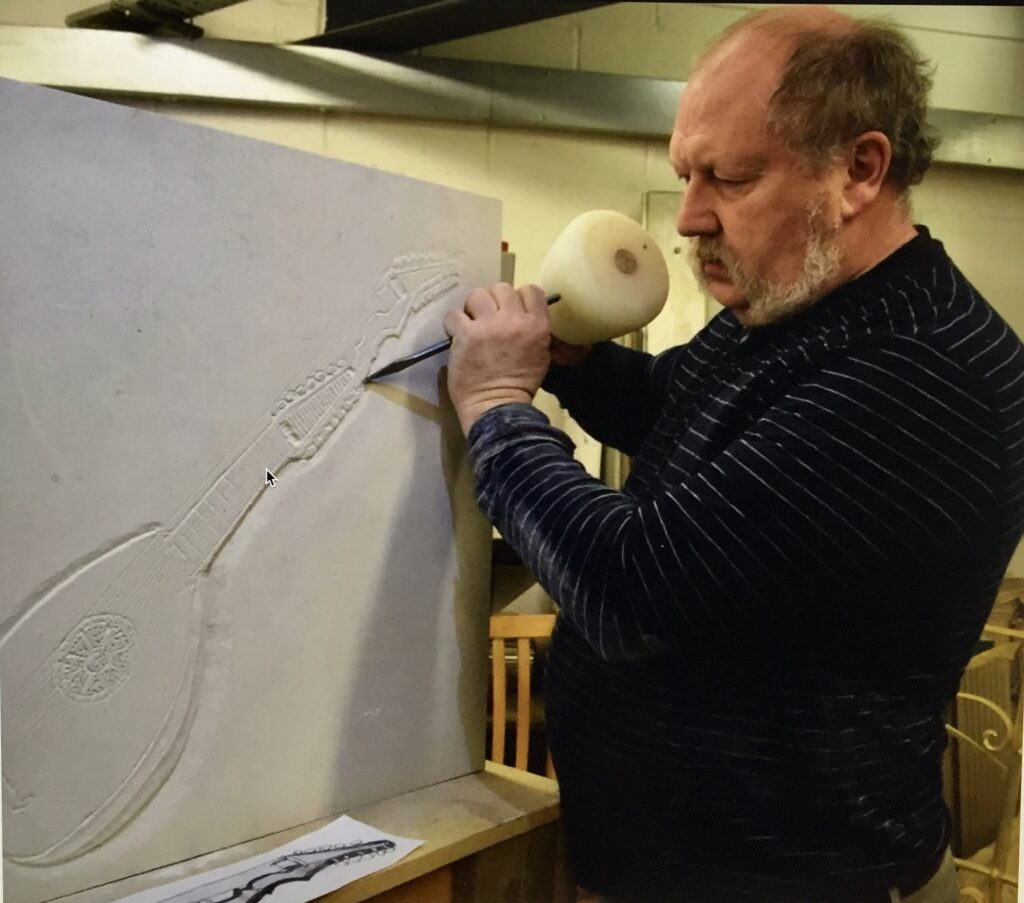
Do visit the garden if you have the chance. Another of its interesting features is that it is irrigated by rainwater harvested from the roof of the hotel next door!
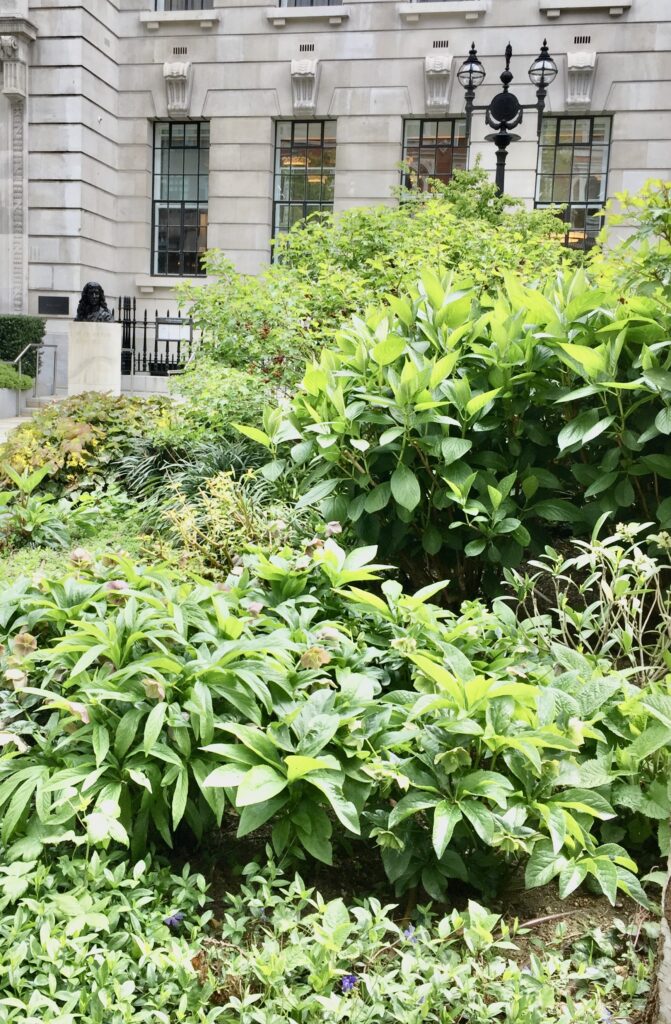
I have written two blogs about Pepys in London and also two about this garden. You can find them here:
Samuel Pepys and his ‘own church’.
Samuel Pepys and the Plague – ‘God preserve us all’.
Bladderstones and fleas in the Seething Lane Garden.
Monkeys and lions in Seething Lane.
All of them contain quotes from his famous diary.
If you would like to follow me on Instagram here is the link …
